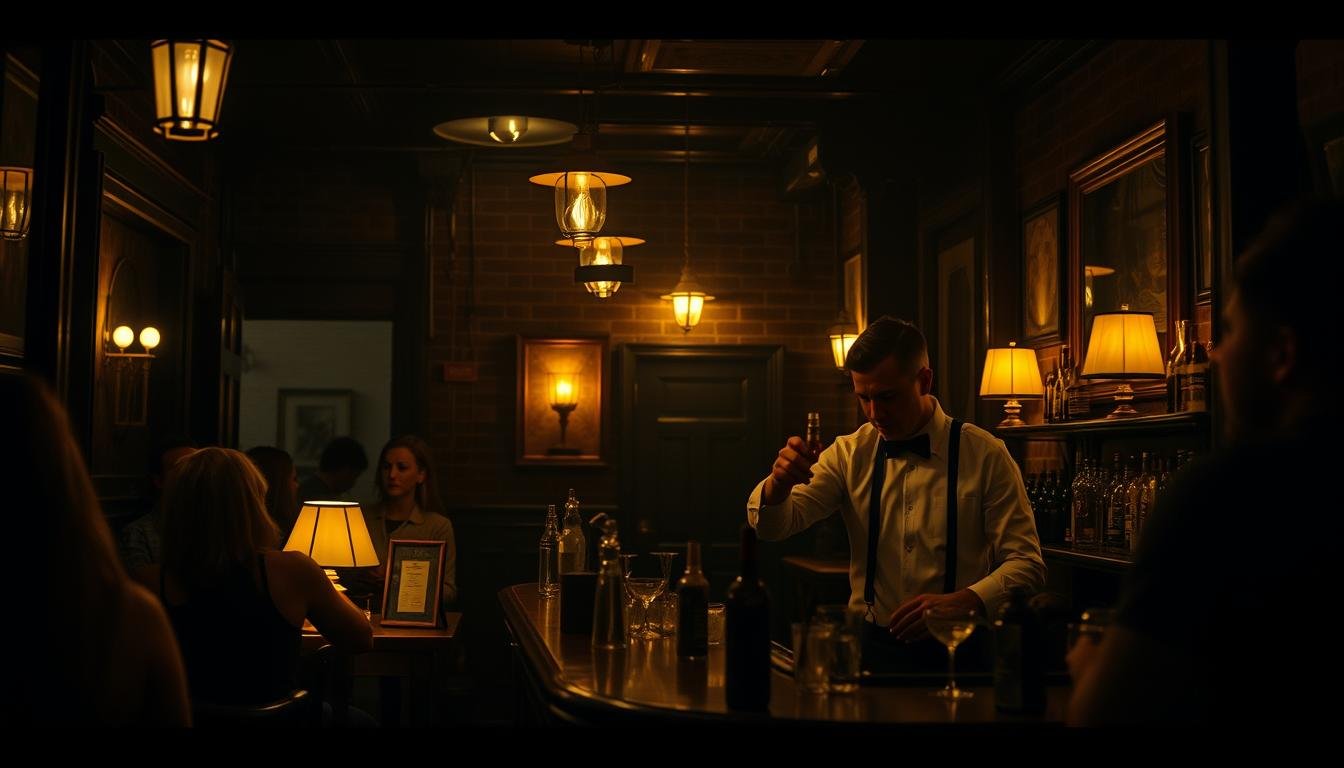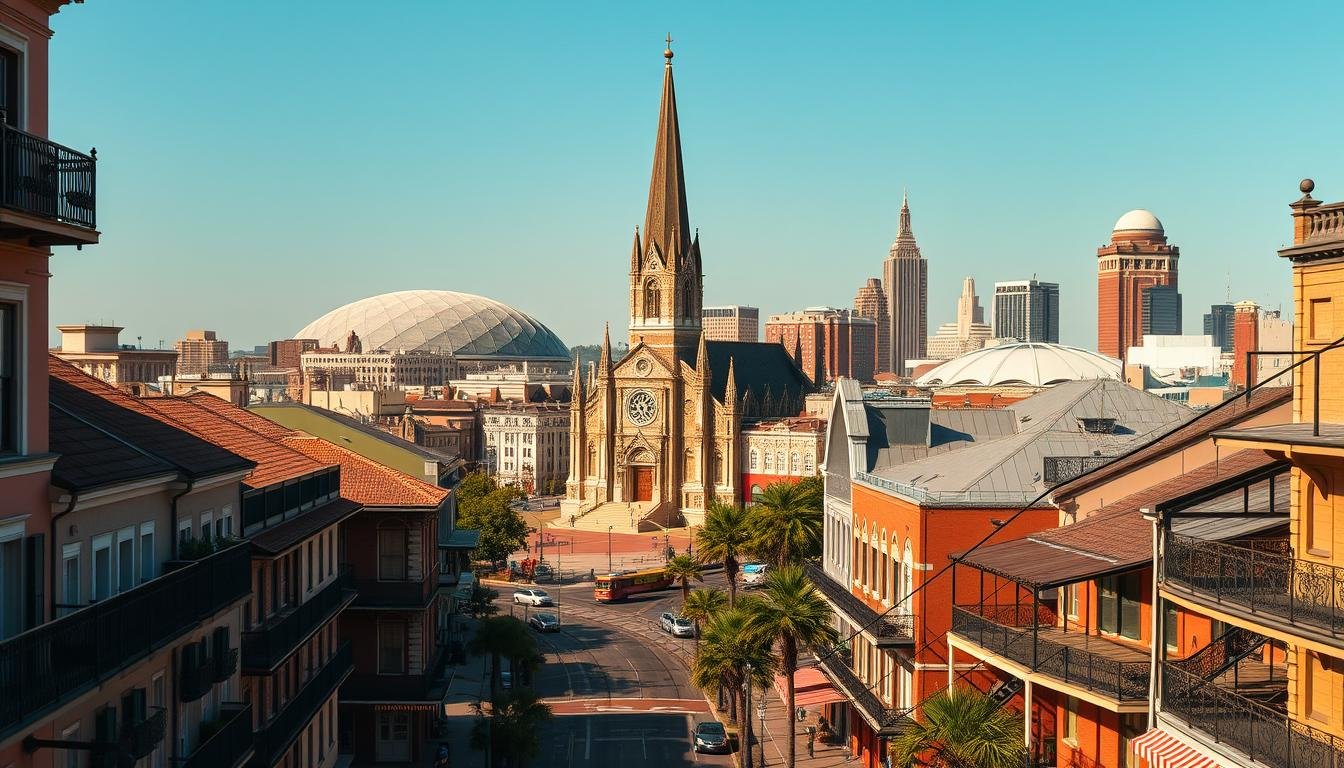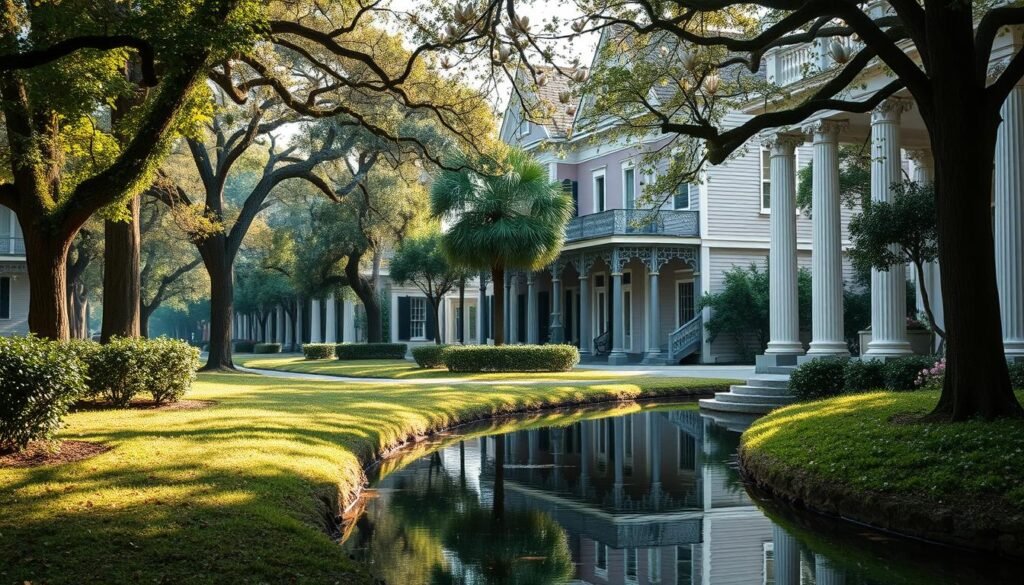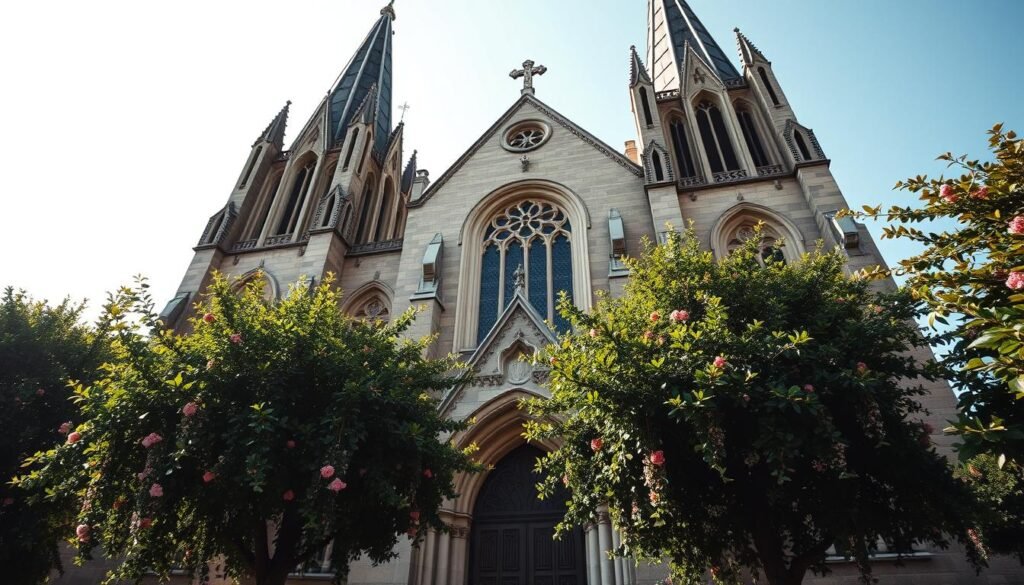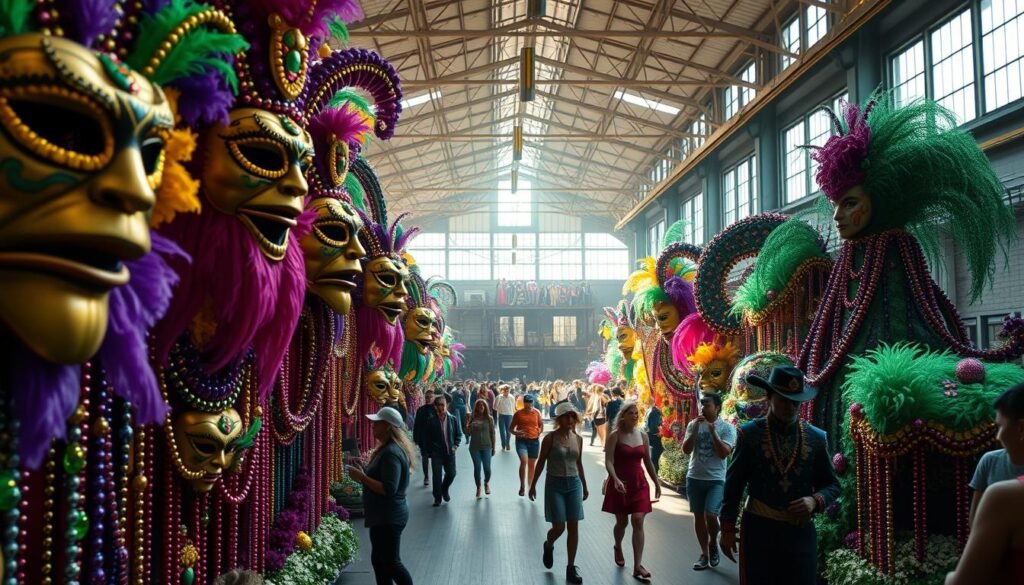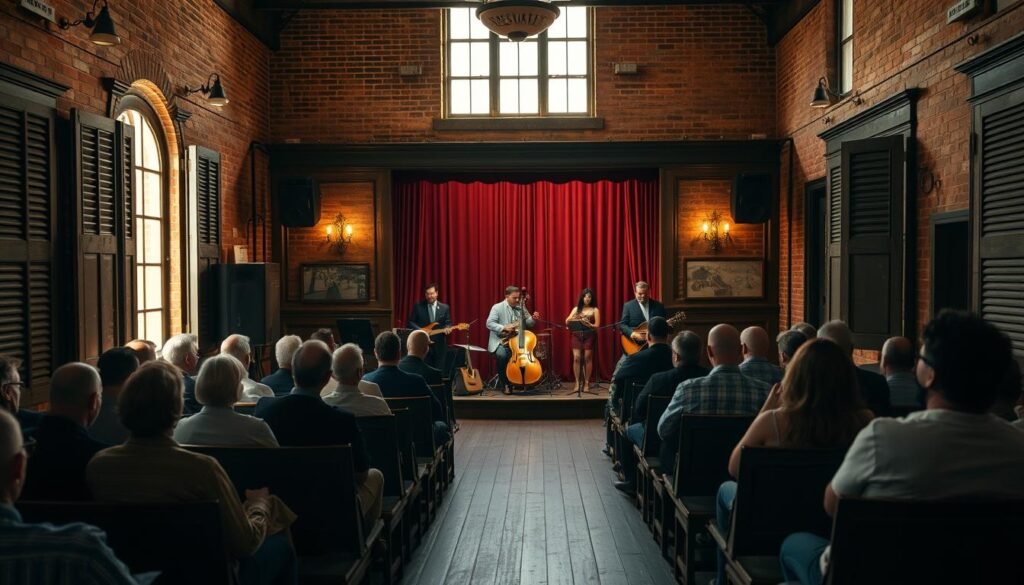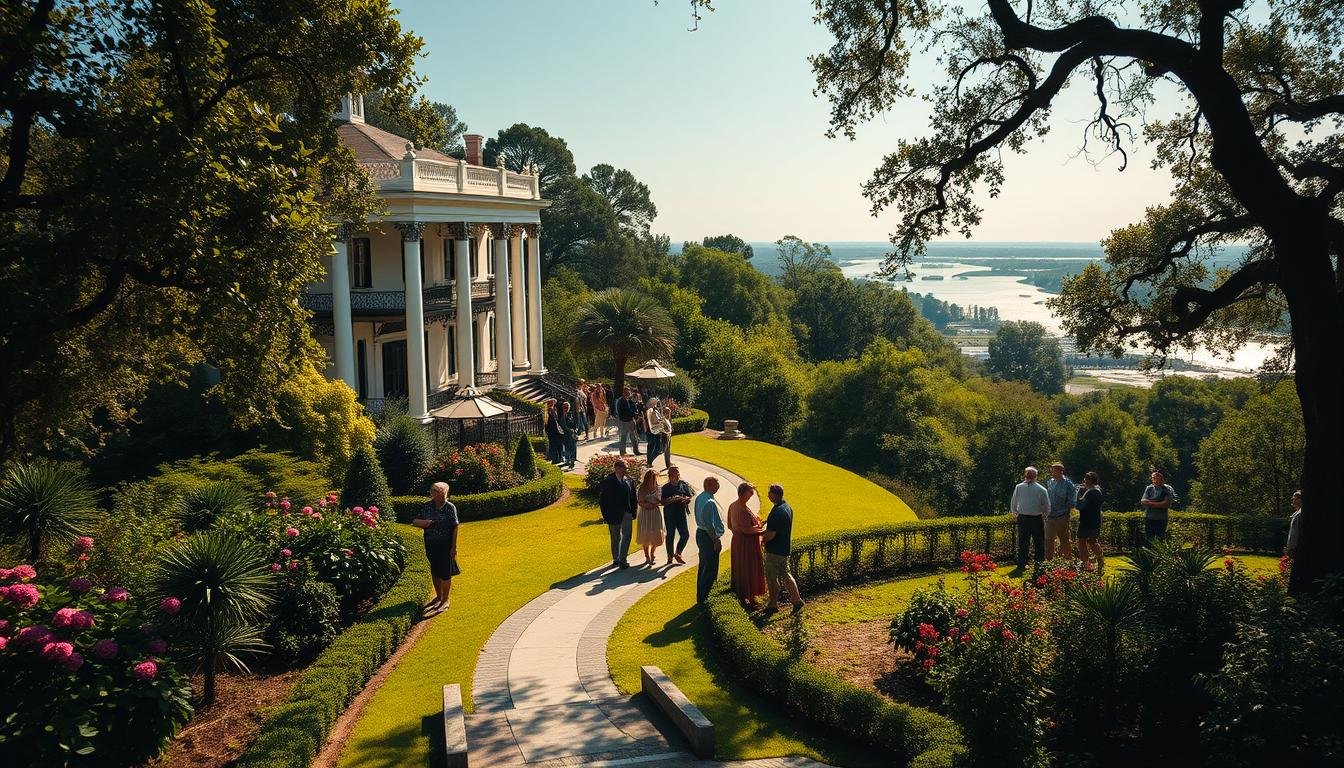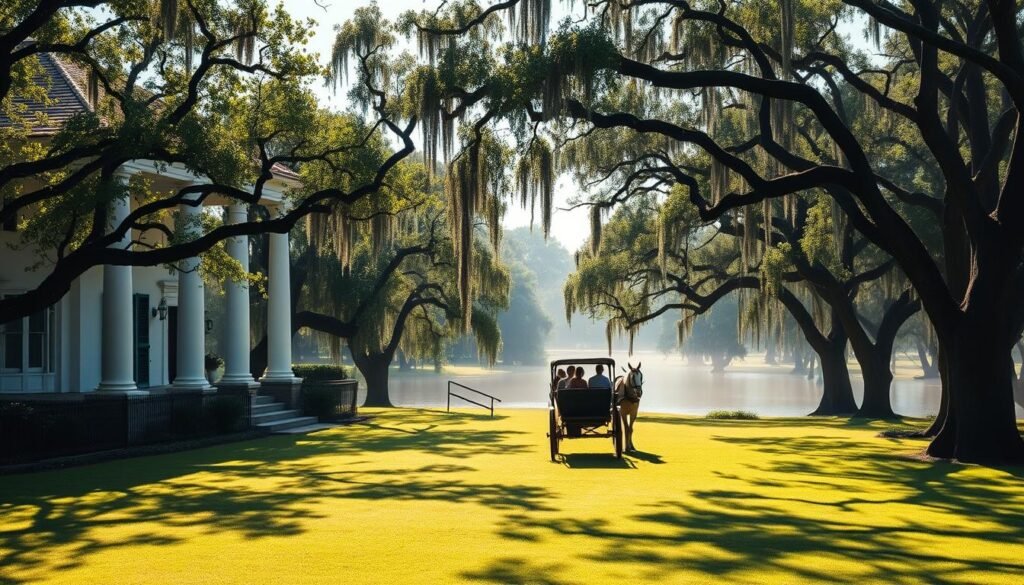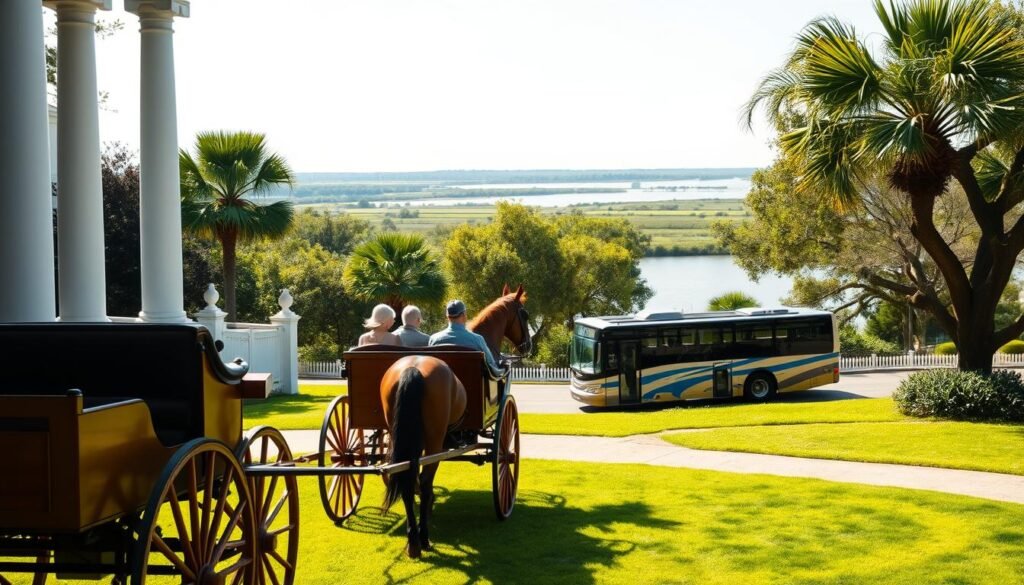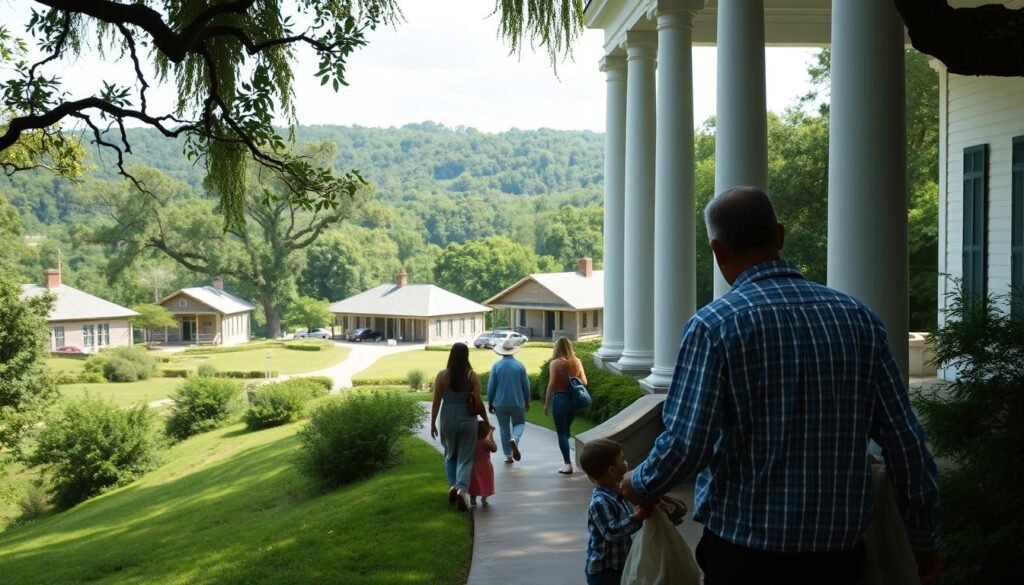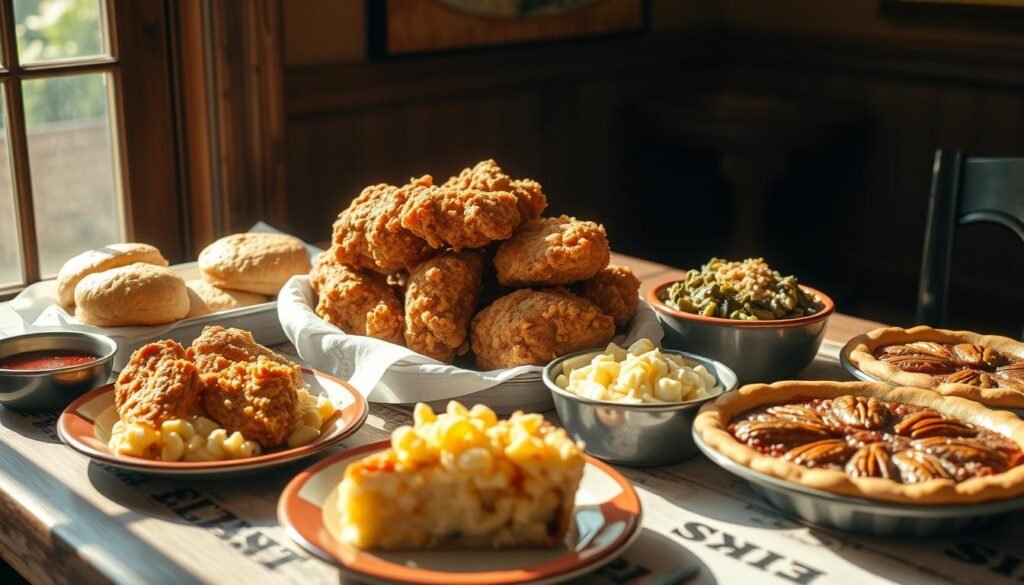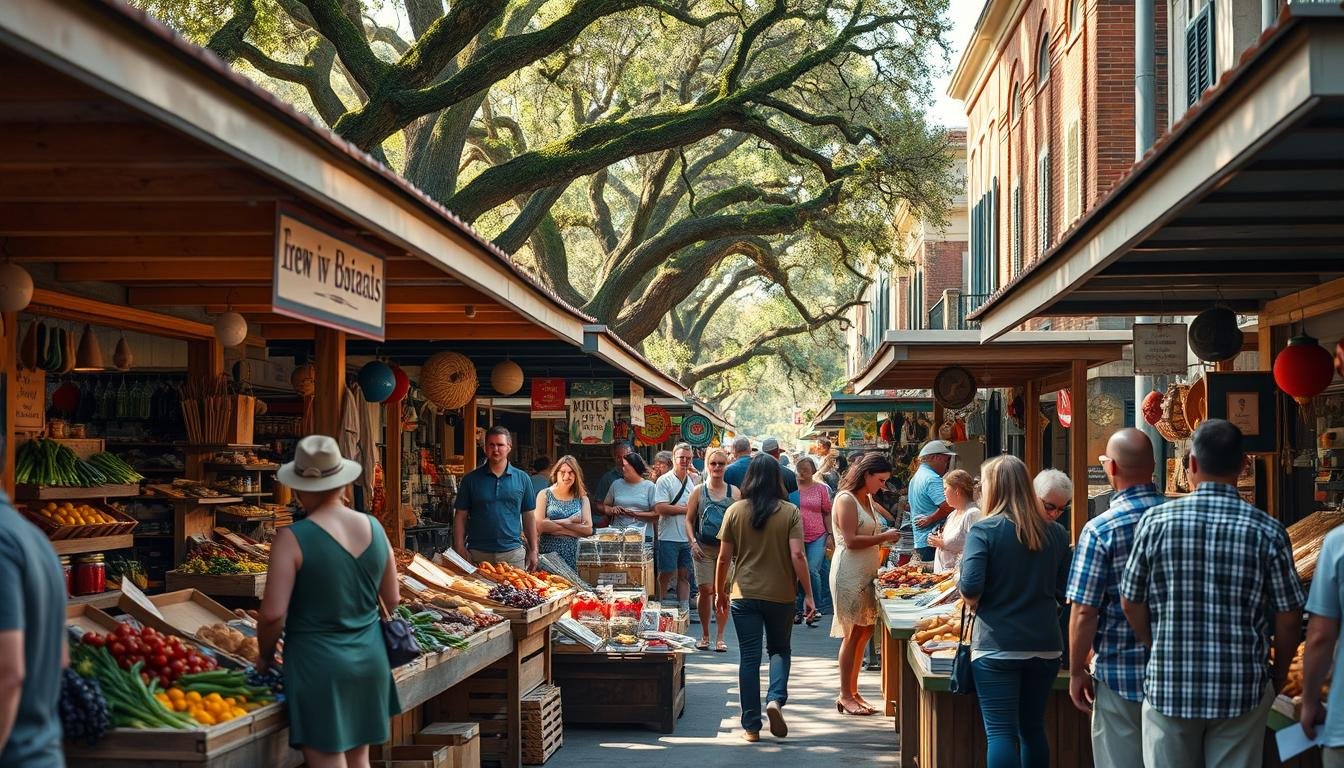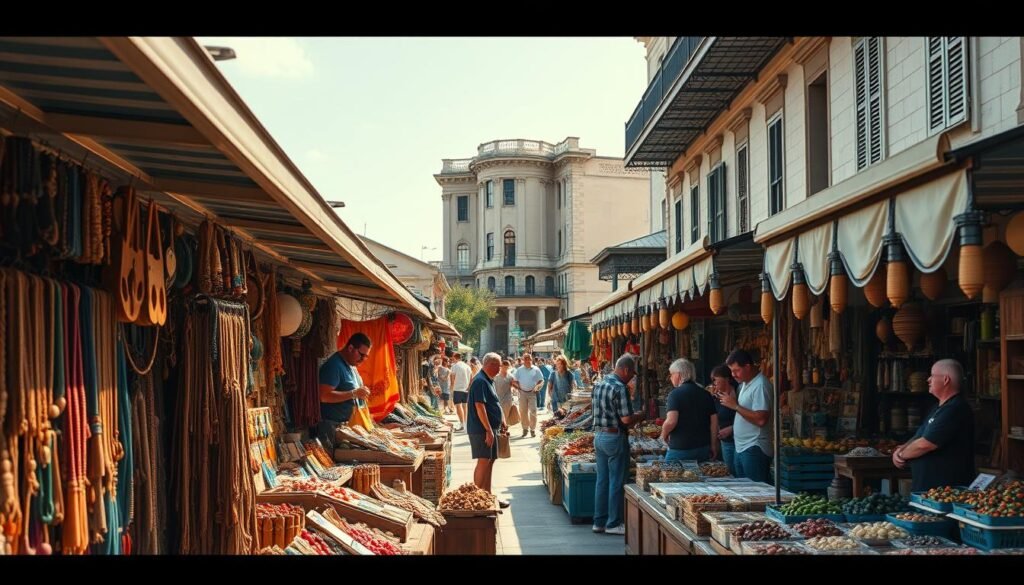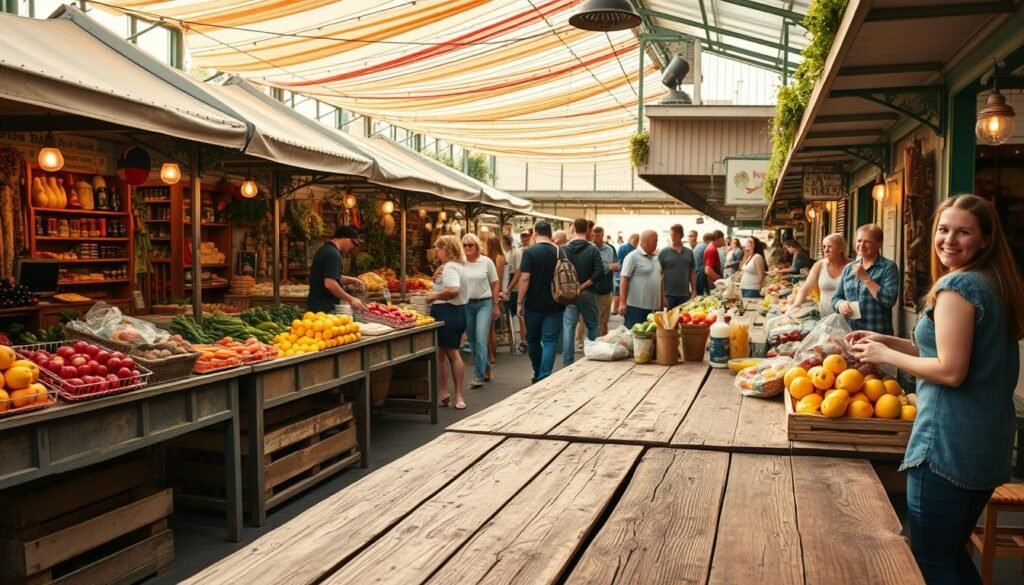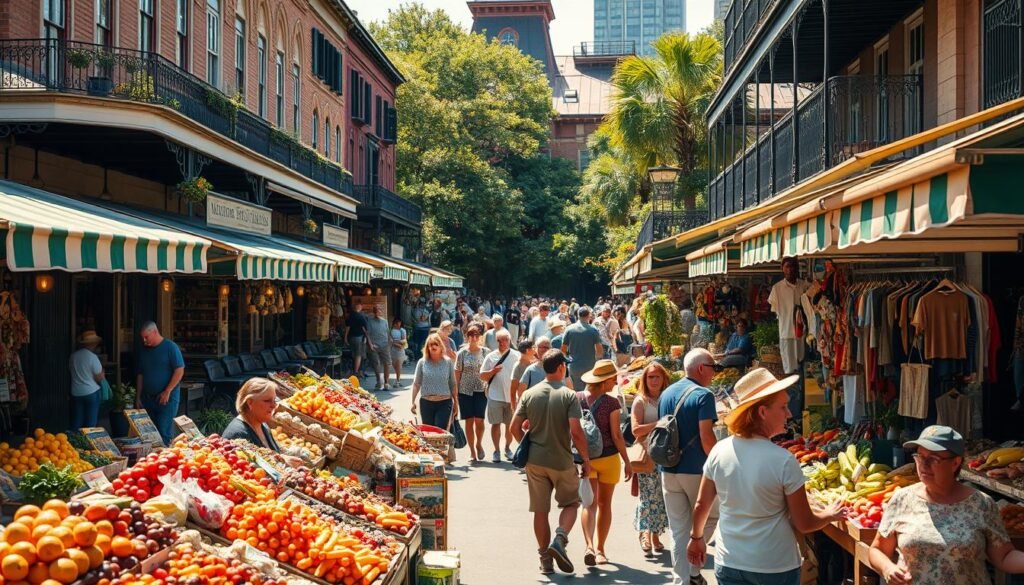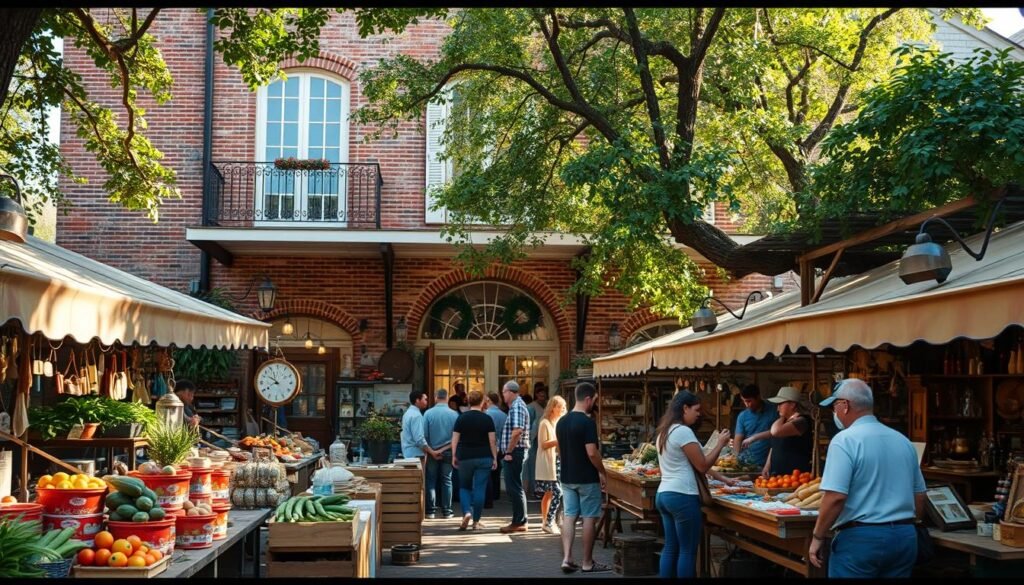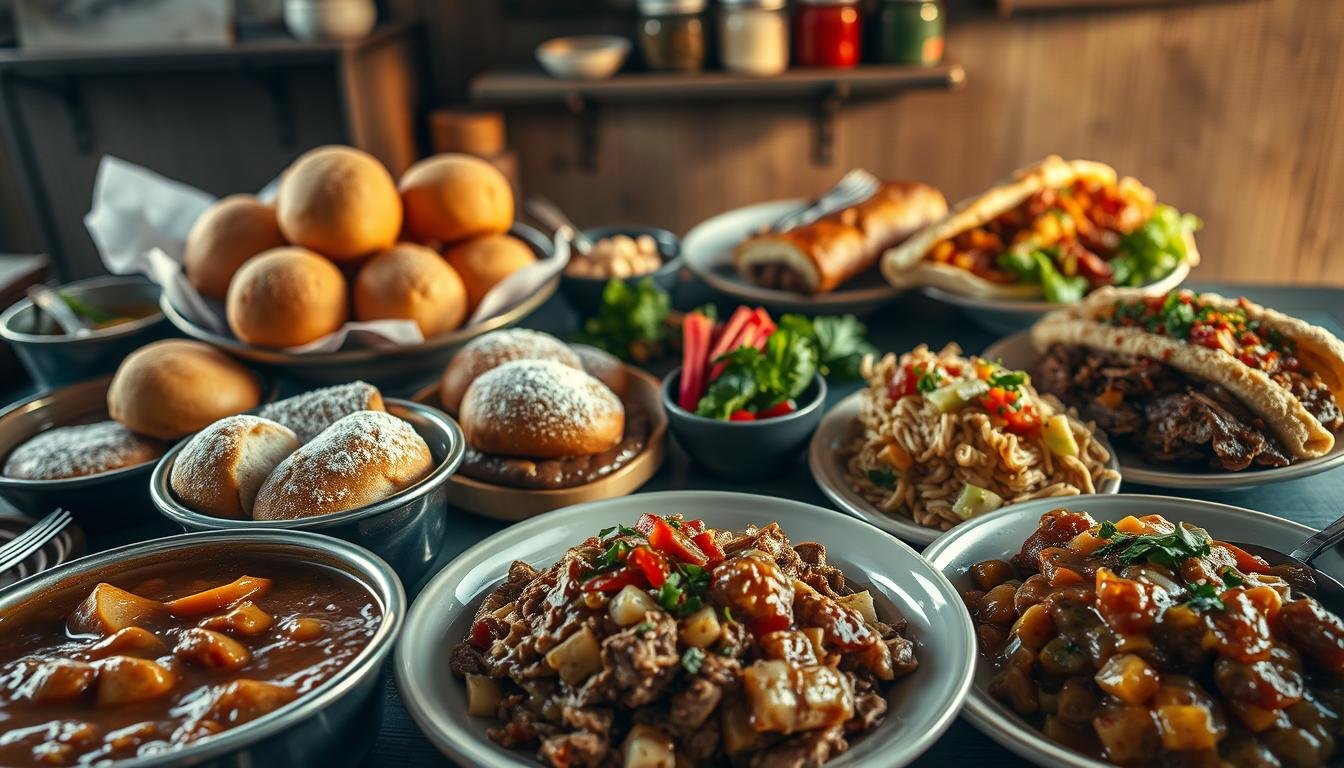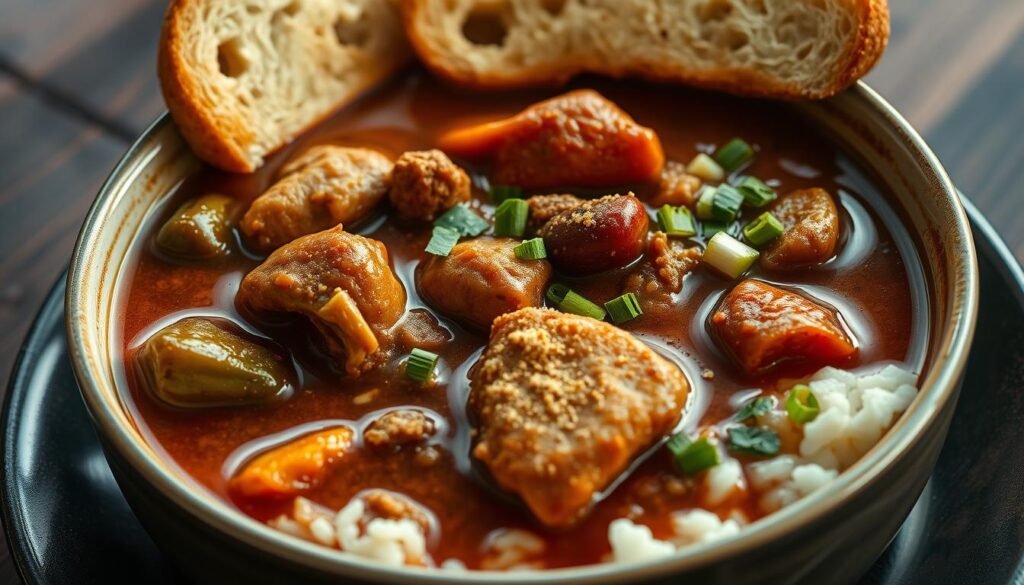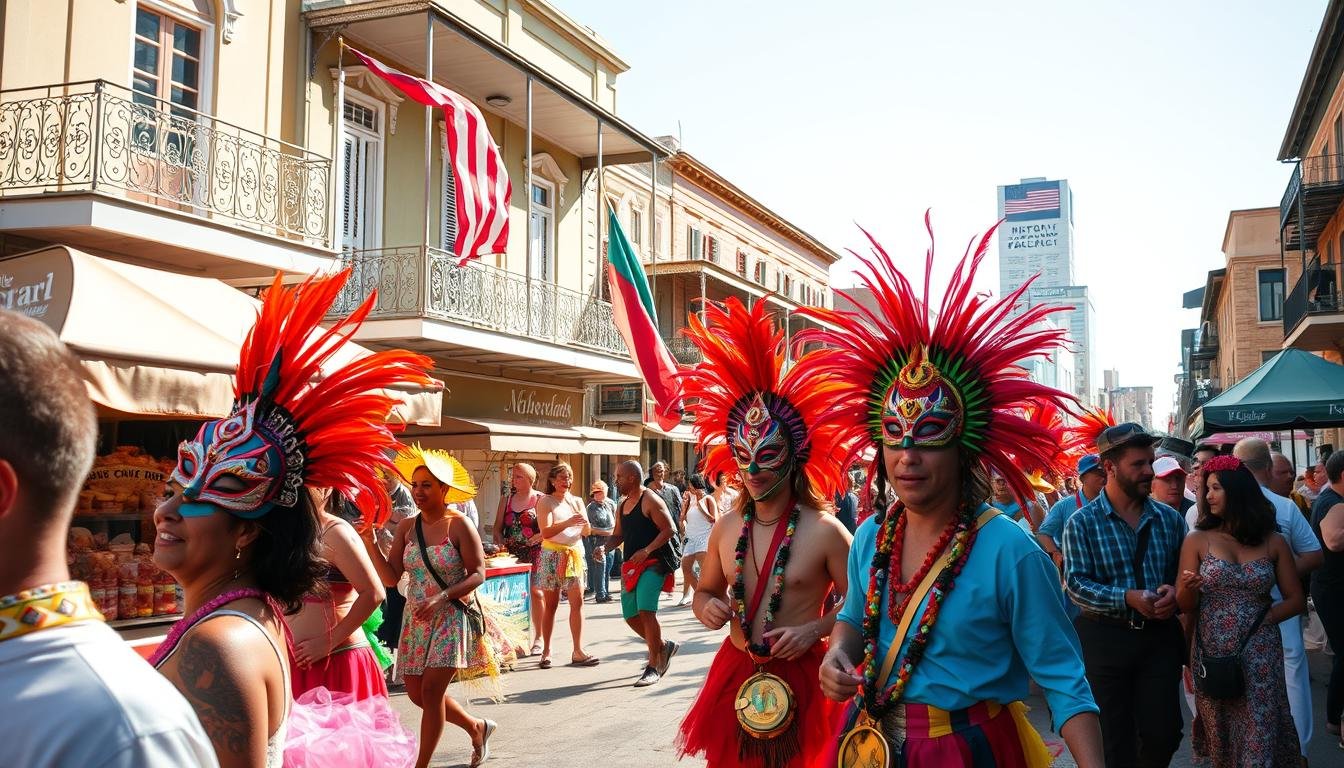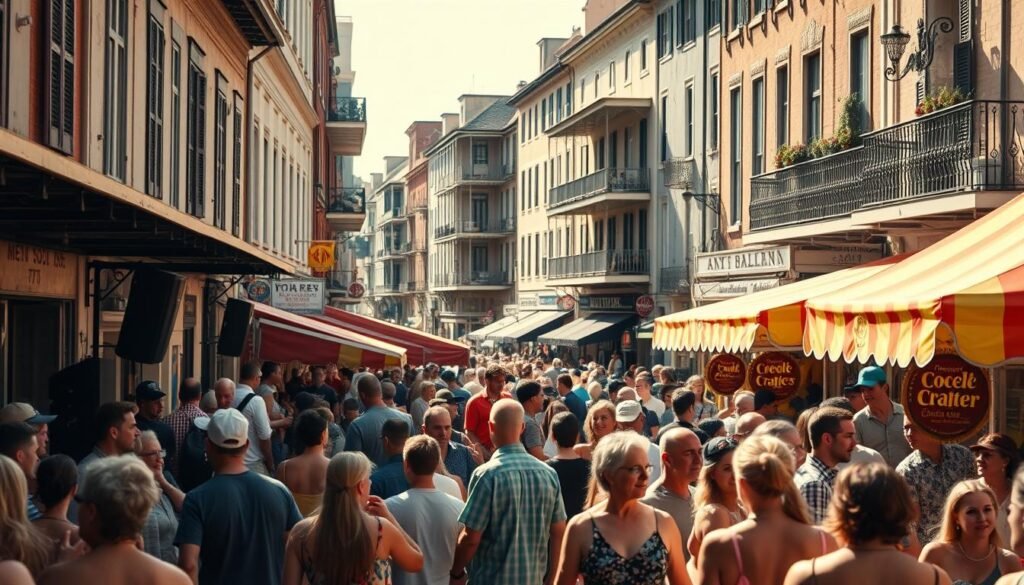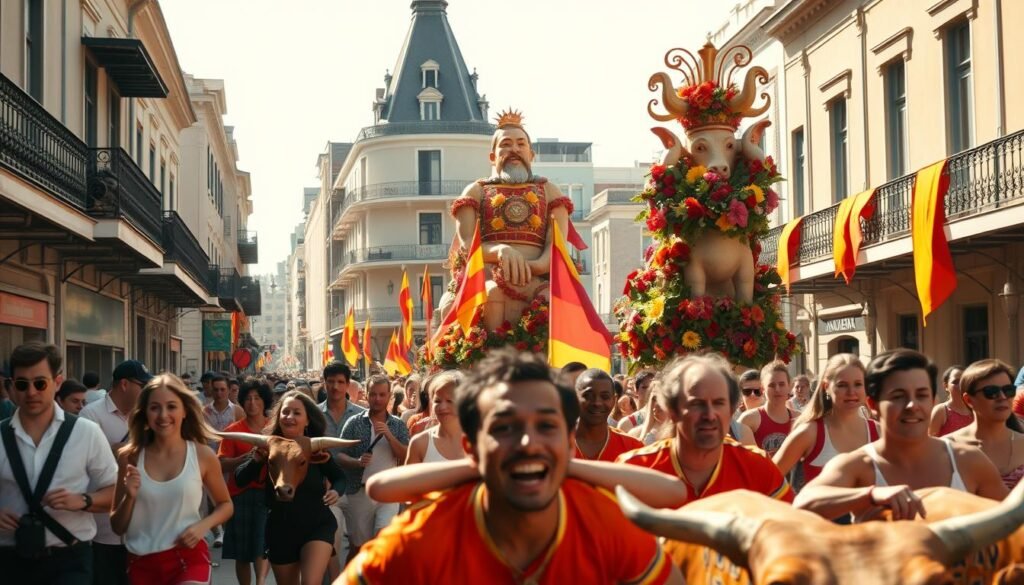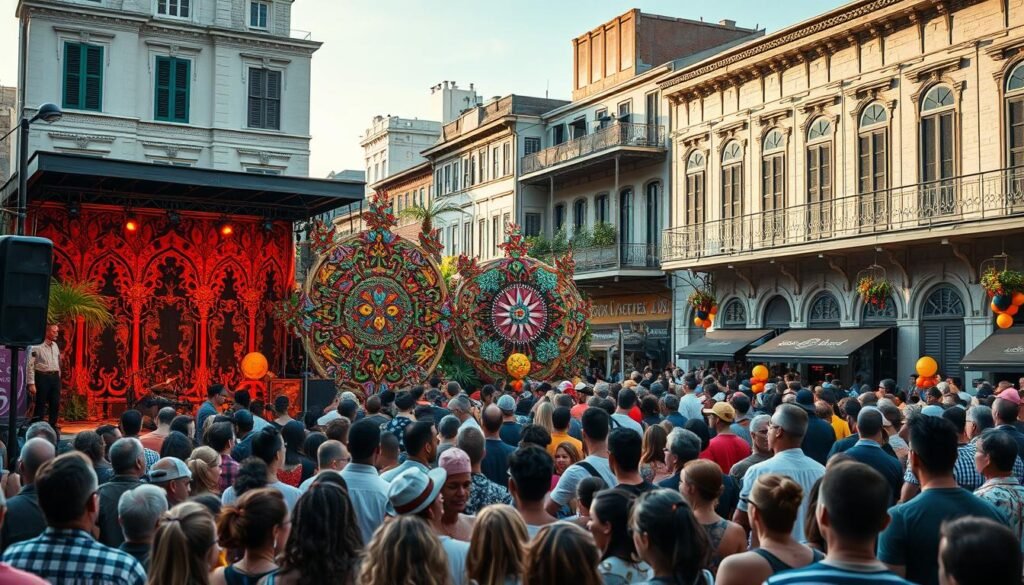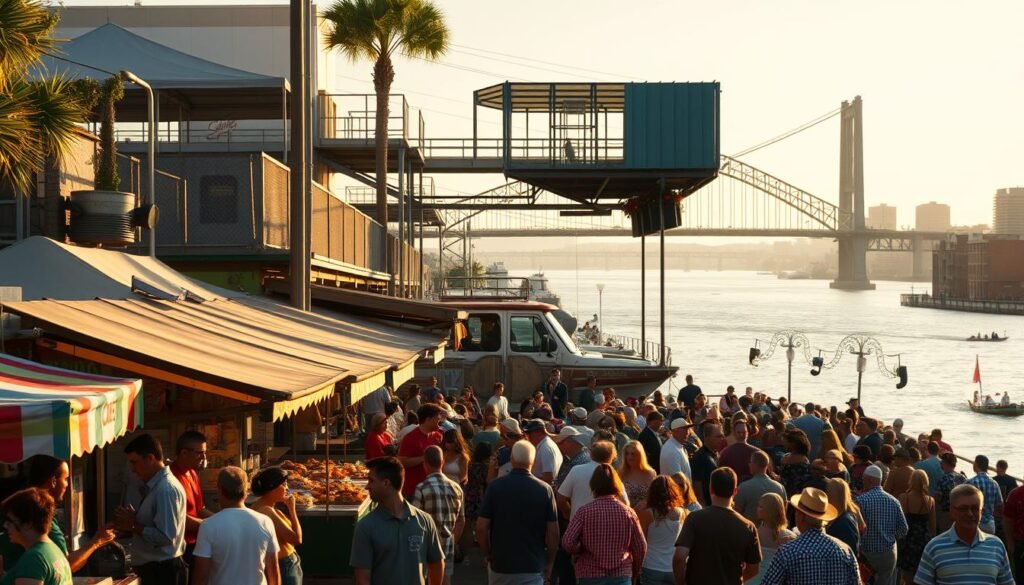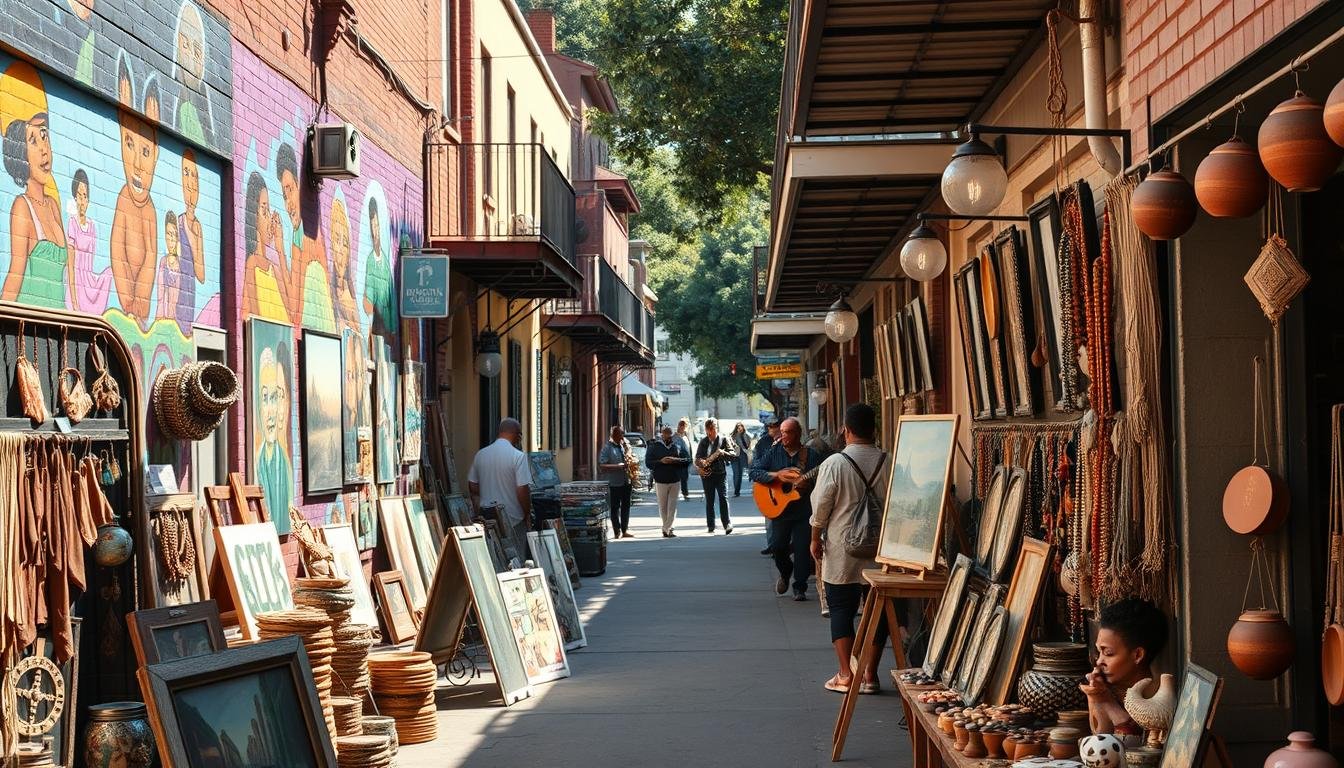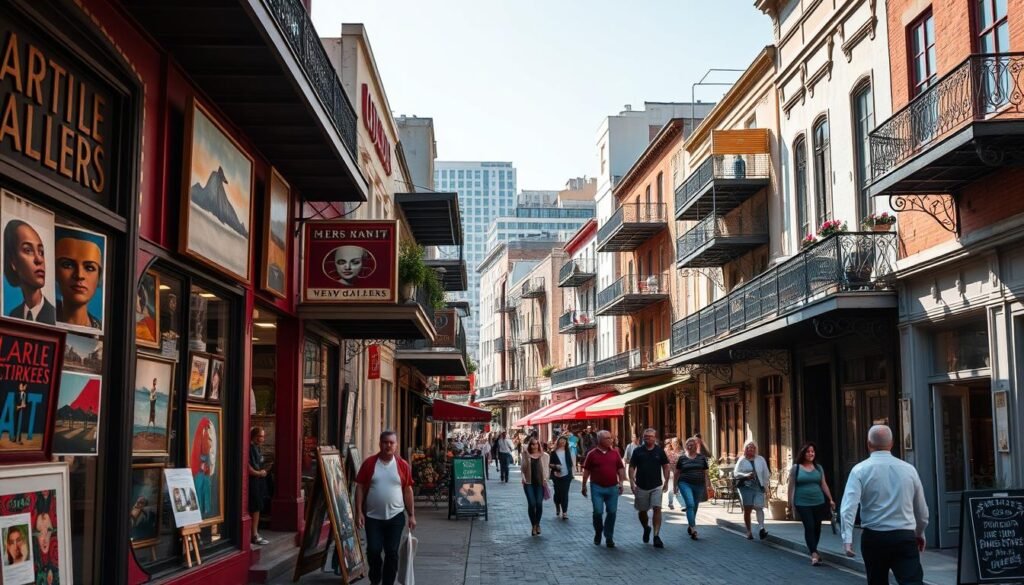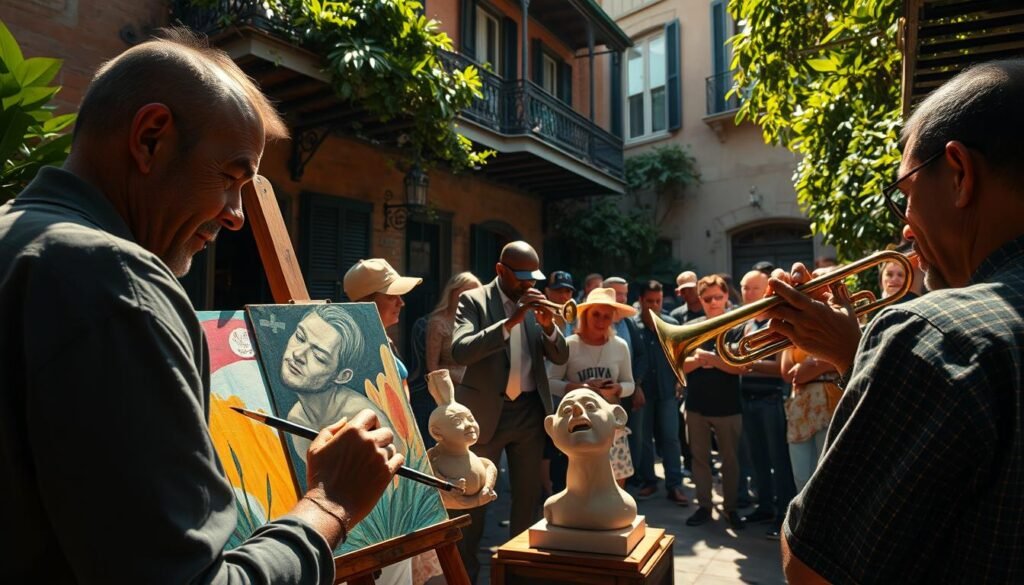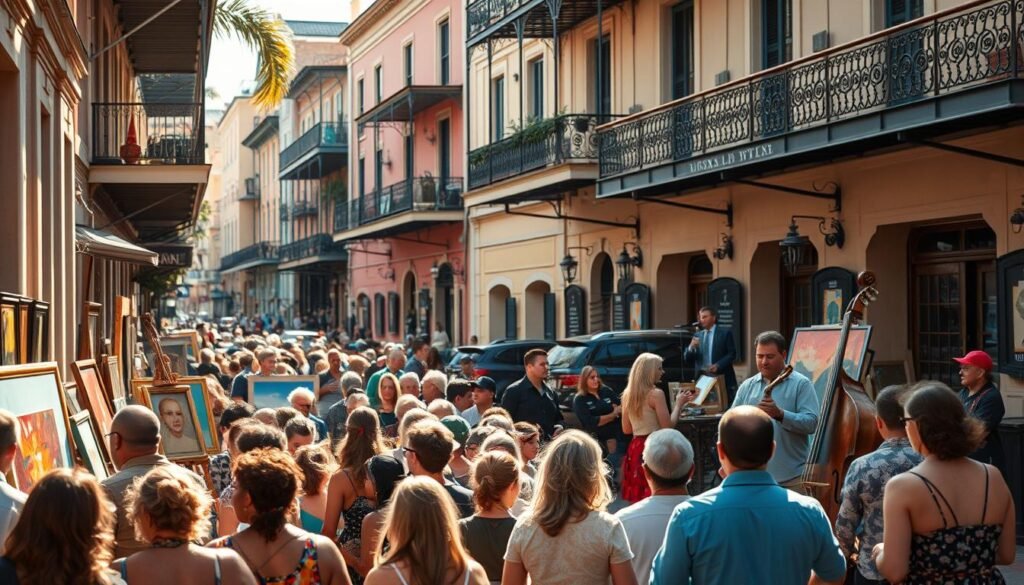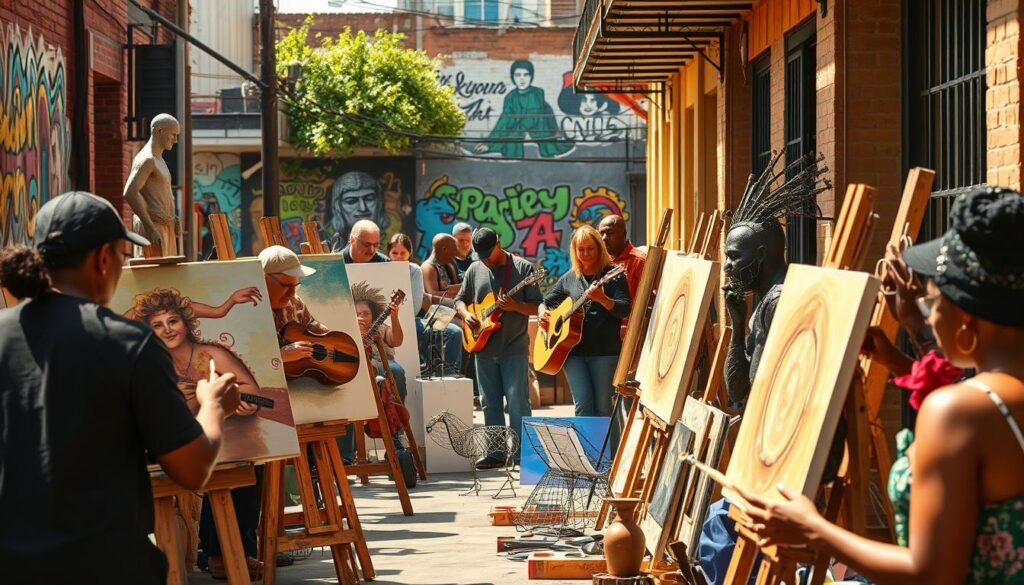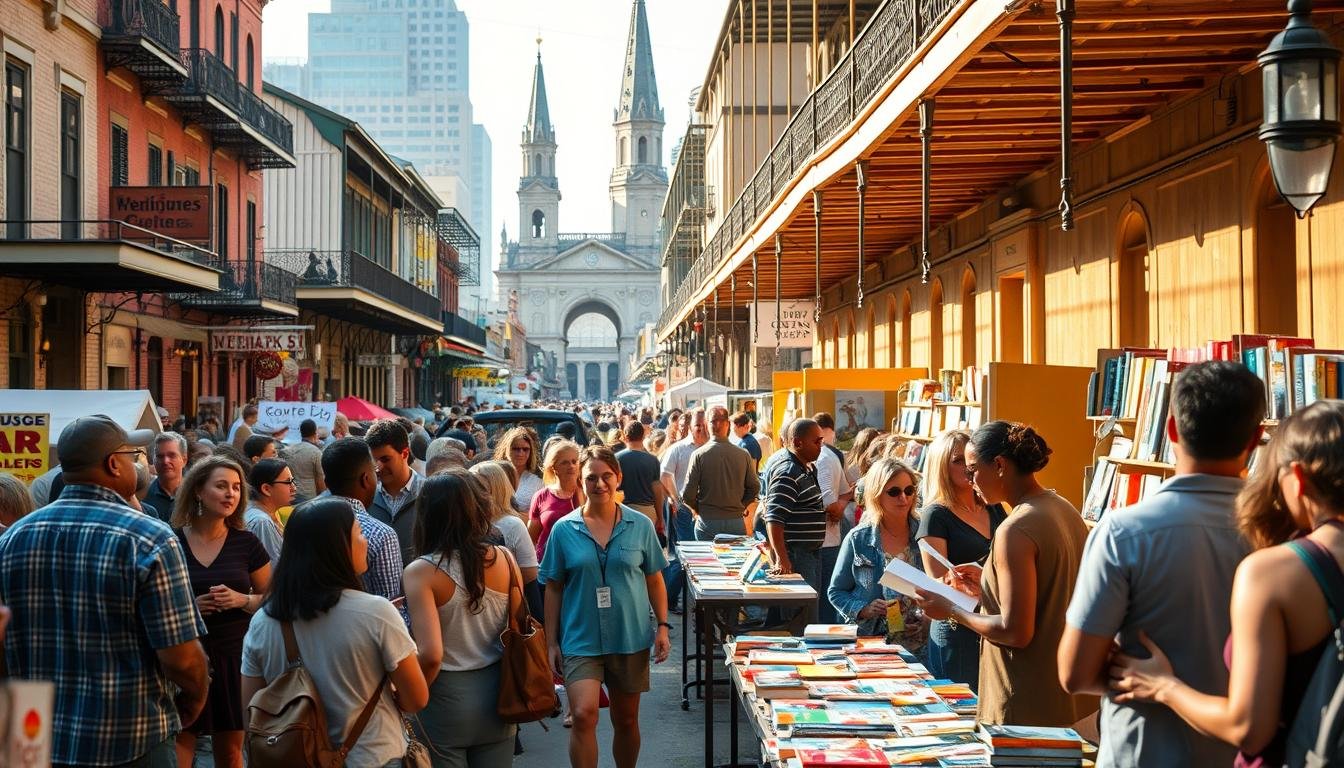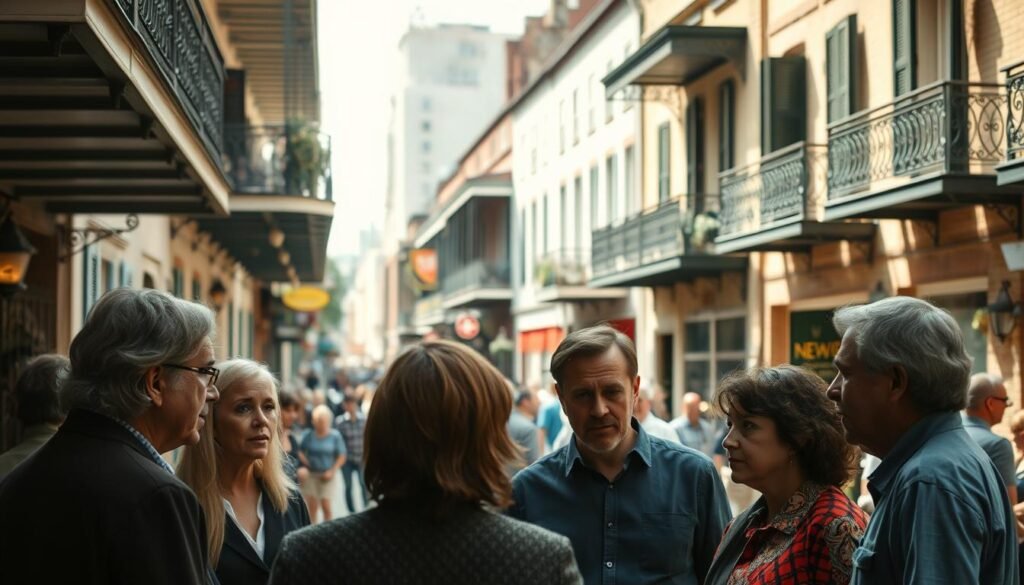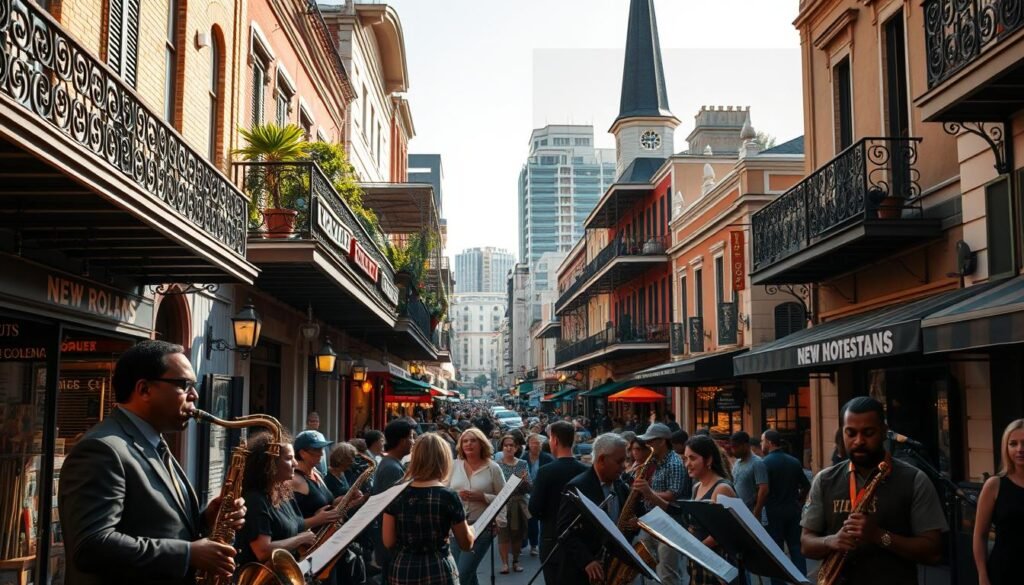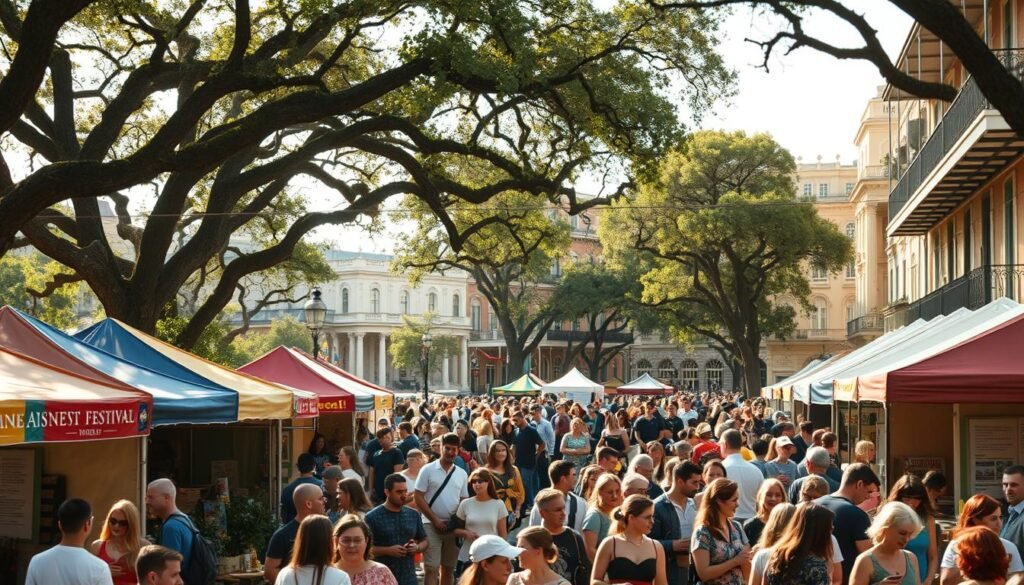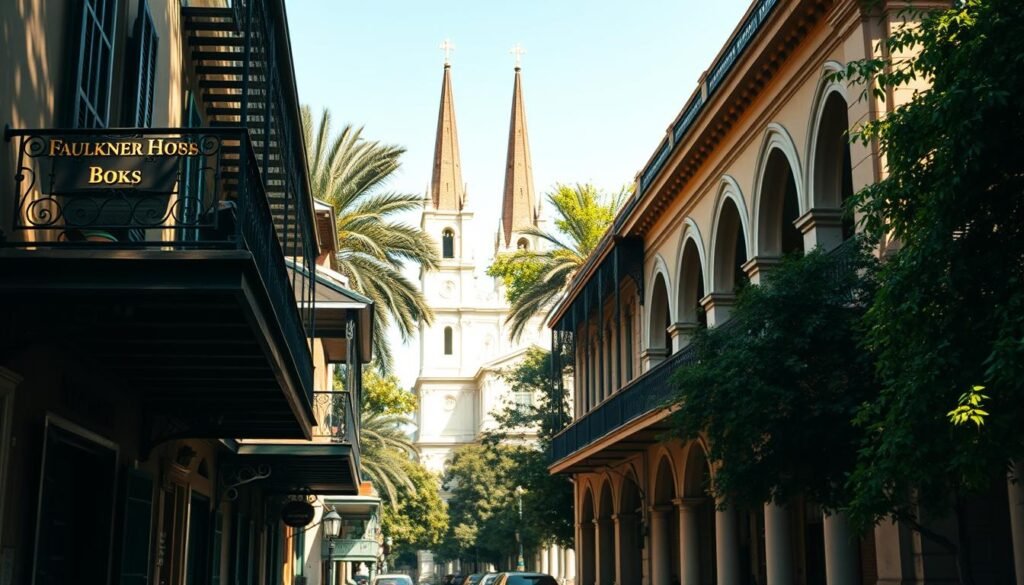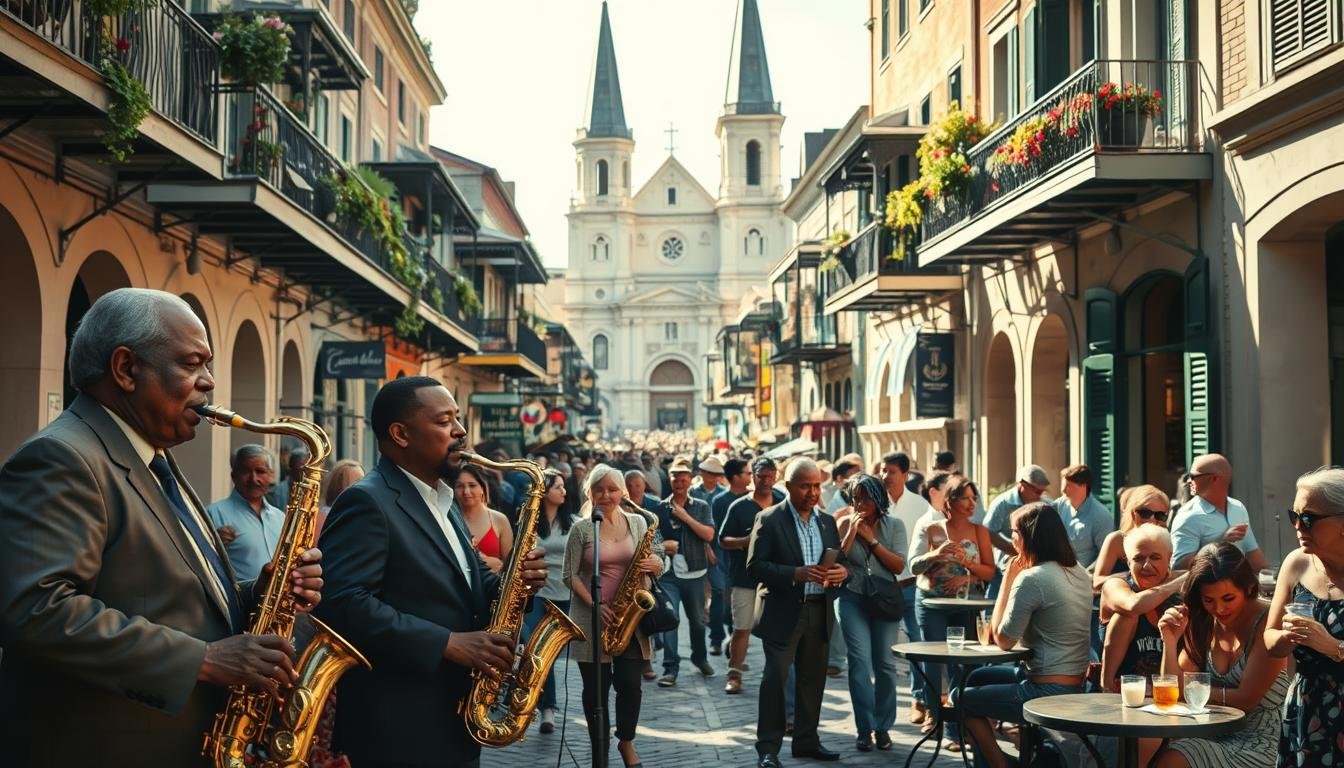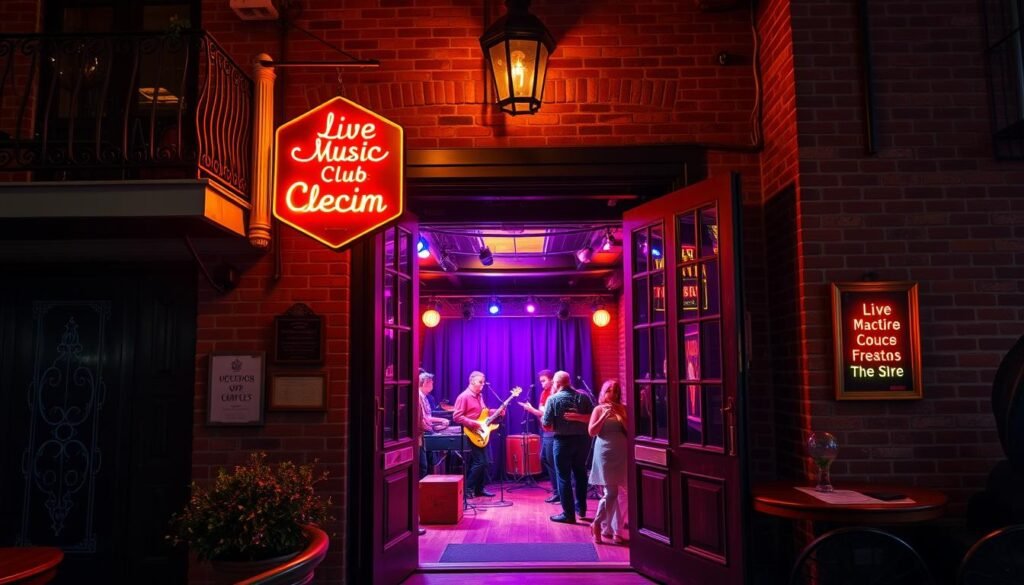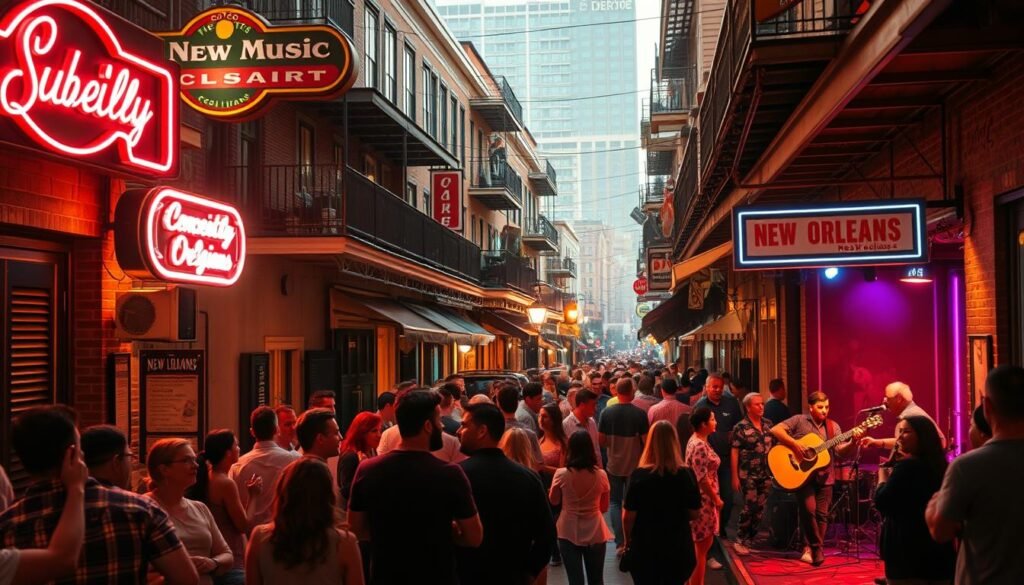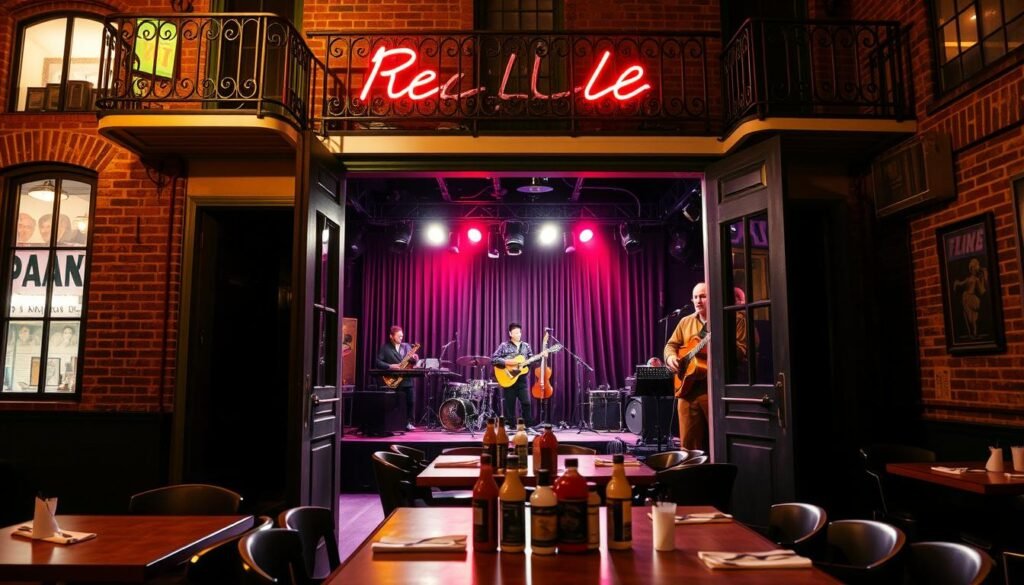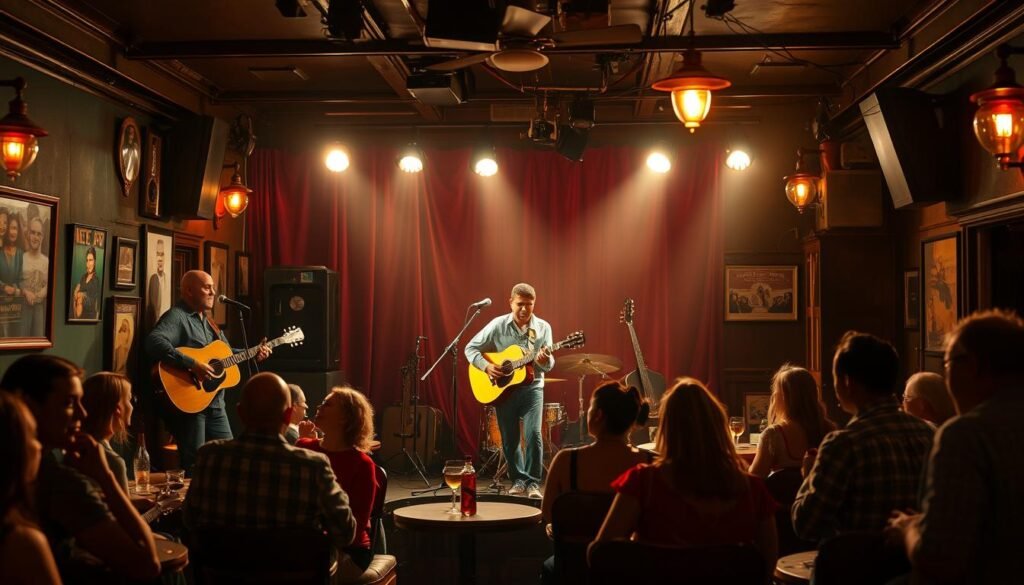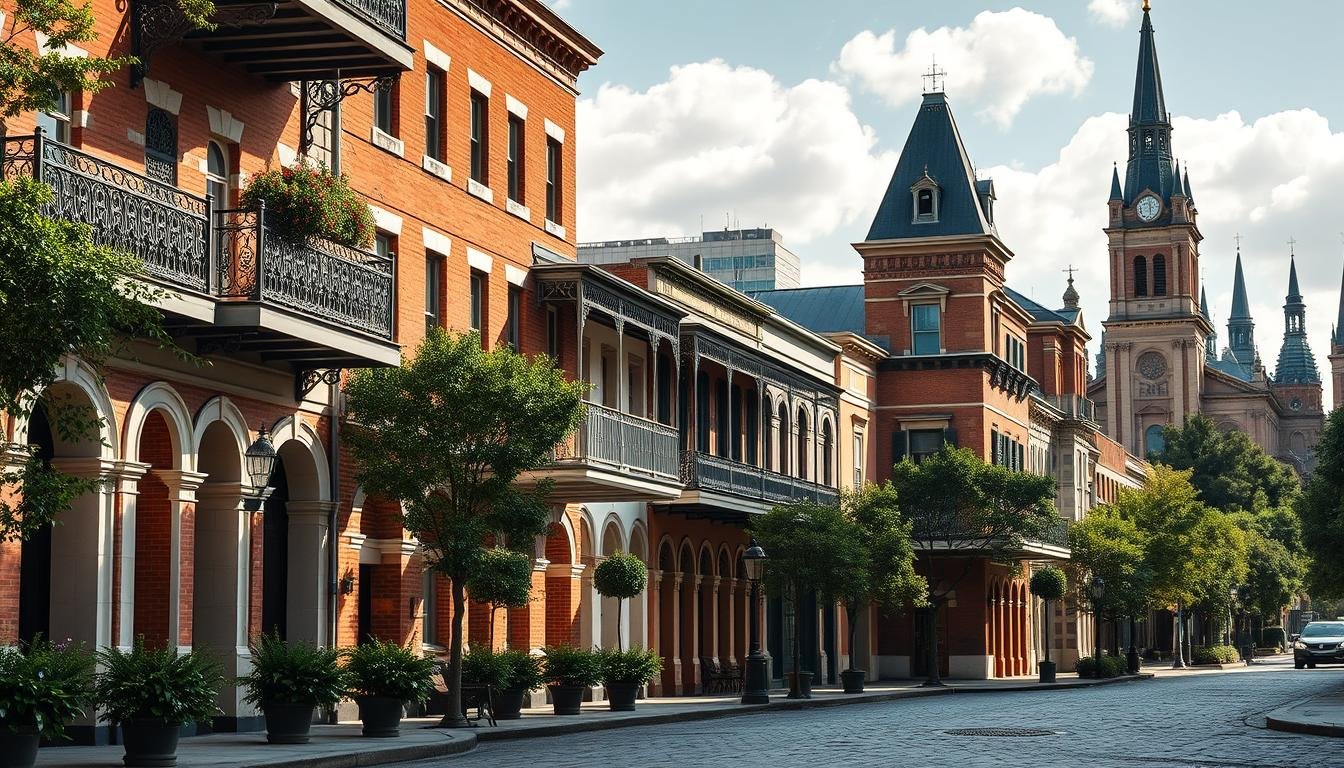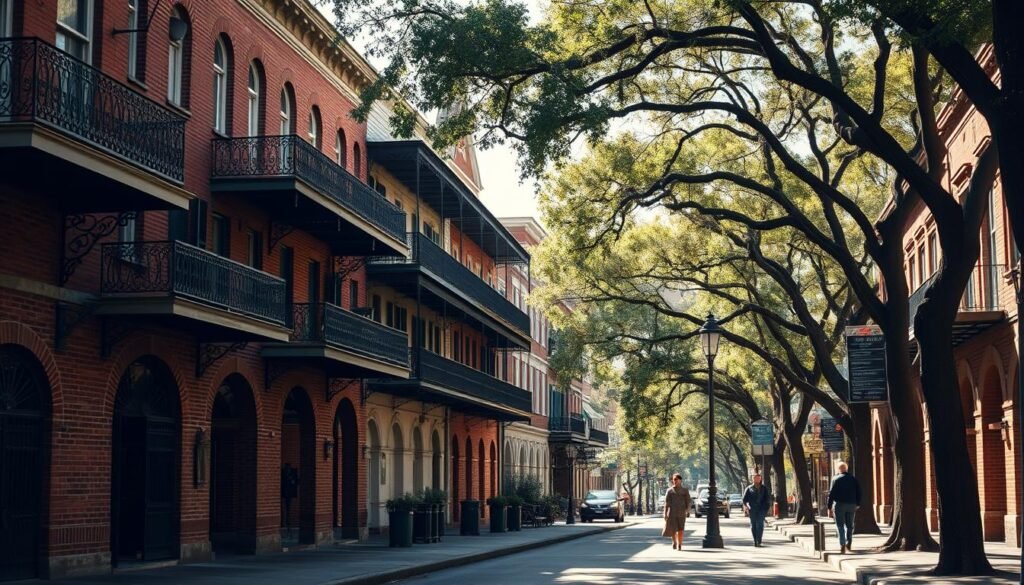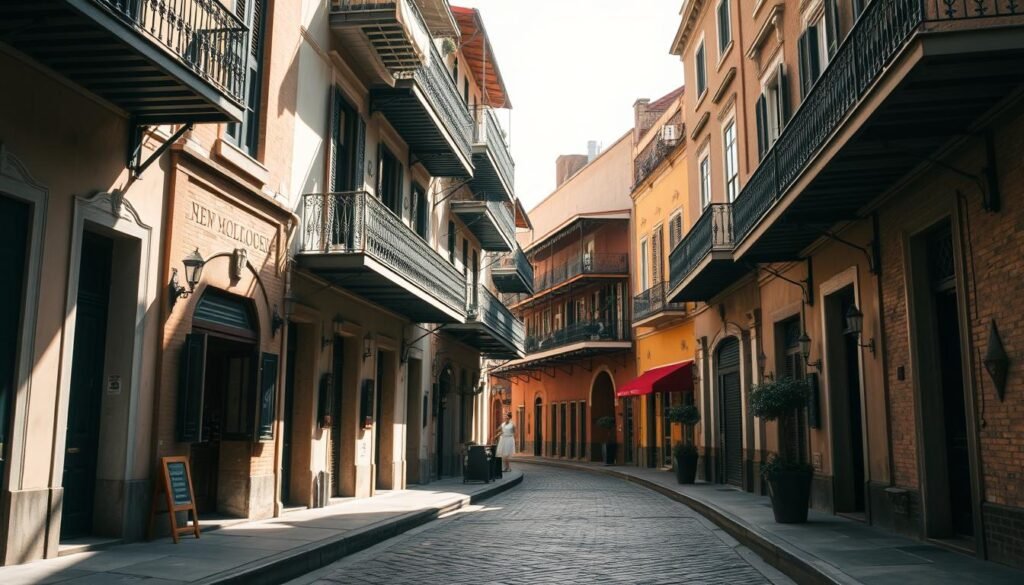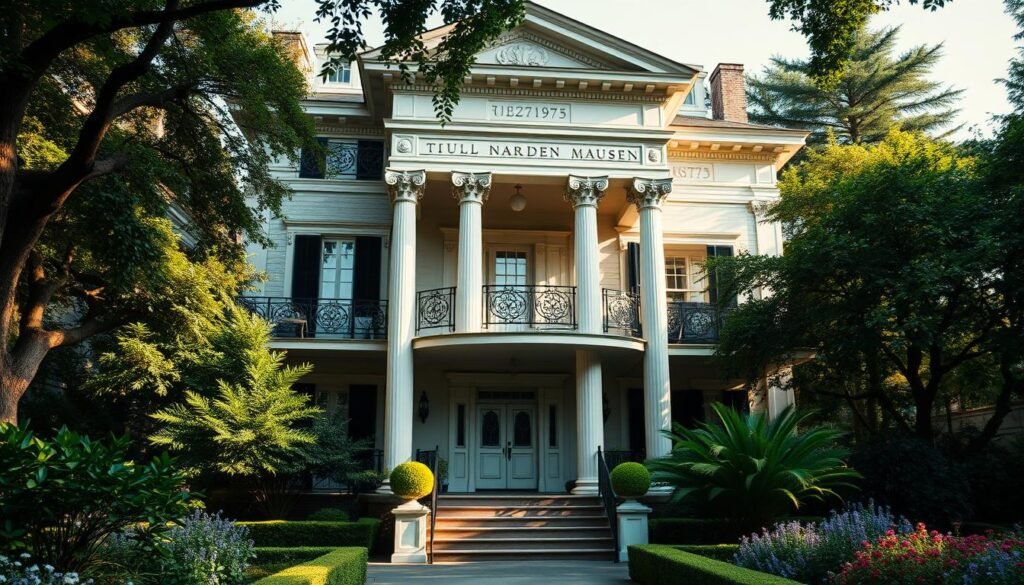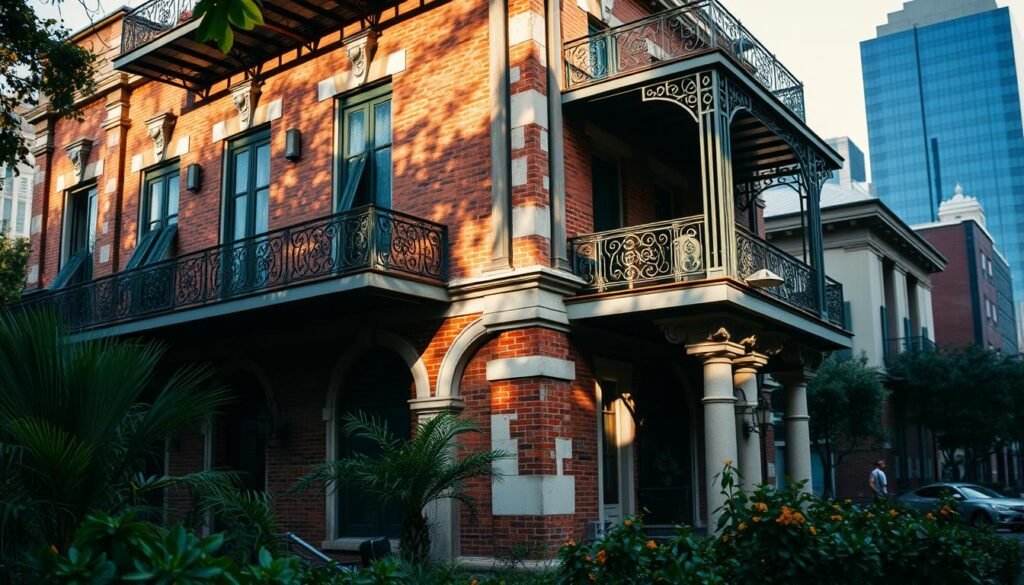As a local, I’m excited to share with you the best-kept secrets of New Orleans’ speakeasy scene. From hidden entrances to craft cocktails, we’ll dive into the world of exclusive bars that make this city so unique.
I’ve had the pleasure of exploring the city’s secret bars, and I’m eager to take you on a journey through the history, culture, and experiences that make New Orleans the perfect city for speakeasy enthusiasts.
Key Takeaways
- Discover the city’s most exclusive speakeasies
- Explore the history and culture behind these secret bars
- Learn about the unique experiences that make New Orleans stand out
- Uncover the best-kept secrets of the city’s speakeasy scene
- Get insider tips on the city’s most hidden gems
A Brief History of Speakeasies in New Orleans
The history of speakeasies in New Orleans is as rich and complex as the city itself. For decades, these hidden bars have been a staple of the city’s nightlife, offering a unique blend of mystery, charm, and rebellious spirit.
New Orleans has always been a city that thrives on individuality and self-expression, traits that were particularly valuable during the Prohibition era. It was during this time that speakeasies truly began to flourish, becoming underground drinking spots New Orleans residents and visitors alike would seek out for a taste of the forbidden.
From Prohibition to Present Day
During the Prohibition era, speakeasies in New Orleans were more than just secret bars; they were institutions that embodied the city’s resistance to authority and its love for revelry. These prohibition-era cocktail lounges were often hidden behind secret doors, unmarked entrances, or disguised as other businesses, adding to their allure and mystique.
As the years passed, the Prohibition era came to an end, but the legacy of these speakeasies lived on. Today, modern speakeasies continue to thrive in New Orleans, blending historical charm with contemporary flair. They offer a unique experience, combining craft cocktails, intimate settings, and a touch of nostalgia for a bygone era.
| Era | Characteristics | Notable Features |
|---|---|---|
| Prohibition Era | Secretive, rebellious, exclusive | Hidden entrances, password-protected |
| Modern Era | Sophisticated, eclectic, vibrant | Craft cocktails, live jazz, unique decor |
The Cultural Impact of Speakeasies
Speakeasies have had a profound impact on New Orleans’ culture, contributing to its reputation as a city that values entertainment, creativity, and community. These establishments have fostered a culture of inclusivity and camaraderie, drawing together people from all walks of life.
The influence of speakeasies can also be seen in the city’s thriving music scene, particularly in the realm of jazz. Many speakeasies feature live jazz performances, further cementing the connection between these hidden bars and the city’s rich musical heritage.
In conclusion, the history of speakeasies in New Orleans is a testament to the city’s enduring spirit of creativity and rebellion. From their origins during the Prohibition era to their modern incarnations, these establishments continue to captivate and inspire, offering a unique glimpse into the city’s vibrant cultural landscape.
Why New Orleans is the Perfect Speakeasy City
New Orleans, with its rich history and vibrant culture, stands out as a city tailor-made for speakeasies. The city’s atmosphere is a melting pot of old and new, creating an ideal environment for these hidden gems to thrive.
Unique Vibe and Atmosphere
The French Quarter, with its narrow streets and historic buildings, provides the perfect backdrop for secrecy and exclusivity. The city’s vibrant nightlife and jazzy tunes filling the air make it a haven for those seeking a unique experience.
Blend of History and Modern Flair
New Orleans seamlessly blends its rich history with modern flair, making it an attractive destination for speakeasy enthusiasts. The city’s ability to merge the old with the new is evident in its architecture, cuisine, and, of course, its hidden bars.
| Aspect | Description | Impact on Speakeasies |
|---|---|---|
| Historic Architecture | Narrow streets and old buildings | Provides secrecy and exclusivity |
| Vibrant Nightlife | Lively jazz scene and bars | Attracts those seeking unique experiences |
| Cultural Blend | Mix of French, Spanish, and African influences | Creates a unique cultural identity |
In conclusion, New Orleans’ unique blend of history, culture, and vibrant atmosphere makes it the perfect city for speakeasies to flourish. Whether you’re a local or just visiting, the city’s covert speakeasy venues are sure to leave a lasting impression.
Distinctive Features of Hidden Speakeasies
New Orleans’ hidden speakeasies are more than just bars; they’re immersive experiences that transport you to a different era. These clandestine cocktail lounges New Orleans are renowned for, offer a unique blend of history, ambiance, and expertly crafted drinks that set them apart from regular bars.
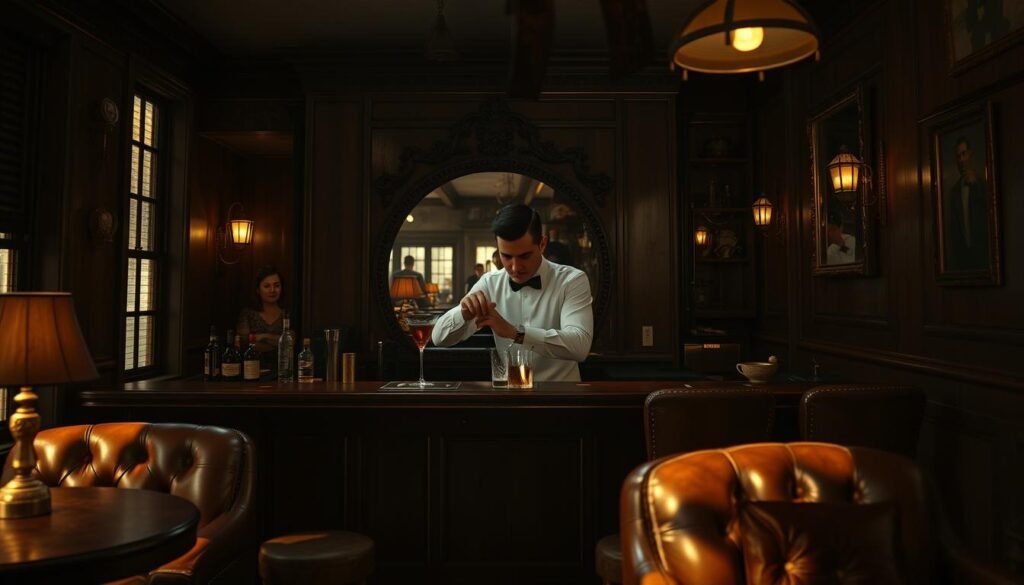
Craft Cocktails and Specialties
One of the defining features of New Orleans’ hidden speakeasies is their focus on craft cocktails. Mixologists in these bars are artists, combining unique ingredients and techniques to create signature drinks that are both delicious and visually stunning. From classics with a twist to entirely new concoctions, the cocktail menus in these speakeasies are designed to surprise and delight.
Many of these hidden Prohibition bars Nola feature seasonal menus that incorporate local ingredients, ensuring that the drinks are not only creative but also fresh and relevant. Whether you’re a cocktail aficionado or just looking to try something new, the craft cocktails in New Orleans’ speakeasies are sure to impress.
Secret Entrances and Ambiance
Another key feature of these hidden gems is their secret entrances and carefully curated ambiance. Unlike regular bars, many of New Orleans’ speakeasies are hidden behind unmarked doors, in basements, or even within other businesses. This secrecy adds to their allure, making visitors feel like they’re part of a special club.
Once inside, the ambiance is often designed to transport you to another time and place. Decor can range from vintage furnishings to modern art installations, creating an atmosphere that’s both sophisticated and inviting. Whether you’re looking for a quiet spot to enjoy a drink or a lively place to dance the night away, New Orleans’ hidden speakeasies have something for everyone.
Top Hidden Speakeasies to Visit in New Orleans
New Orleans’ rich history and culture are perfectly captured in its hidden speakeasies. These secret bars offer a unique blend of the city’s past and present, making them must-visit destinations for anyone looking to experience the authentic New Orleans.
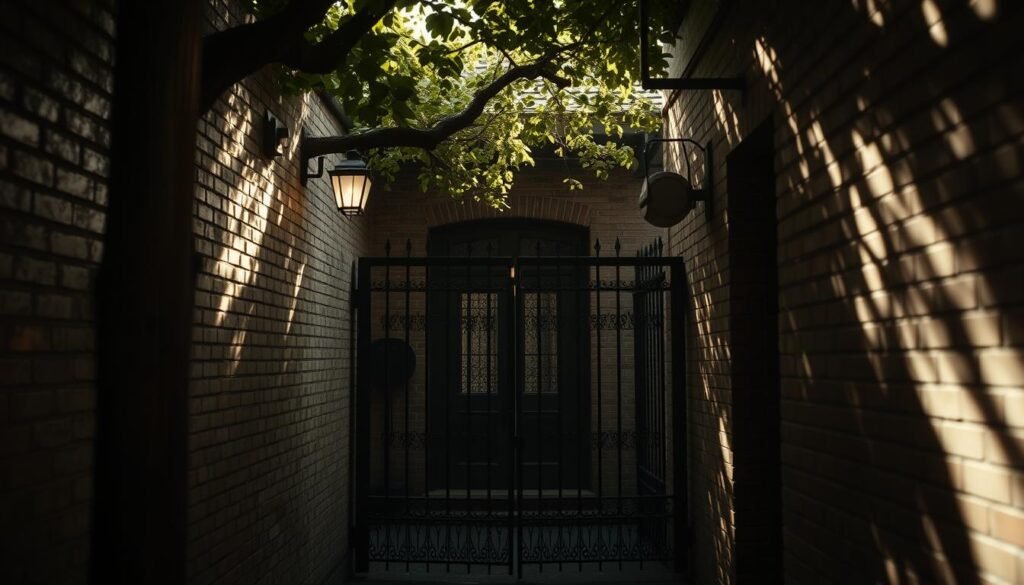
The Back Room at Coterie
Tucked away in the French Quarter, The Back Room at Coterie is an intimate speakeasy that offers an upscale cocktail experience. With its sophisticated ambiance and expertly crafted drinks, it’s a perfect spot for a night out.
- Expertly crafted cocktails using fresh ingredients
- Intimate setting with a vintage vibe
- Perfect for special occasions or a romantic evening
The Carousel Bar
The Carousel Bar is a legendary spot in New Orleans, famous for its rotating bar and extensive cocktail menu. It’s a great place to enjoy a classic New Orleans cocktail while taking in the lively atmosphere.
- Extensive cocktail menu with classic and modern drinks
- Rotating bar offers a unique experience
- Live music adds to the energetic vibe
The 21st Amendment
The 21st Amendment is a hidden gem in the Warehouse District, offering a speakeasy-style experience with a focus on craft cocktails. The bar’s intimate setting and knowledgeable staff make it a standout.
- Craft cocktails made with house-infused spirits
- Cozy atmosphere perfect for relaxed evenings
- Expert staff happy to guide you through the menu
Launched by the French 75
Launched by the French 75 is a stylish speakeasy located within the Hotel Modern New Orleans. It offers a sophisticated cocktail experience with a focus on innovative drinks and a chic ambiance.
- Innovative cocktails with unique flavor combinations
- Elegant decor and upscale atmosphere
- Perfect for a night out or special occasion
These hidden speakeasies are just a few of the many secret bars New Orleans has to offer. Whether you’re a local or just visiting, they’re sure to provide an unforgettable experience.
How to Spot a Speakeasy in the City
Spotting a speakeasy in New Orleans can be a thrilling adventure, akin to uncovering a hidden treasure. The city’s underground drinking culture is rich with secrets, and with the right guidance, you can experience the best of it.
To start, you need to know what to look for. Speakeasies often blend into their surroundings, making them challenging to identify. However, there are certain clues that can lead you to these hidden gems.
Clues to Look For
When searching for a speakeasy, pay attention to the following:
- Unmarked doors or subtle entrance signs
- Dimly lit exteriors or windows with frosted glass
- Old buildings with renovated interiors
- Locations near popular nightlife areas
Let’s take a closer look at some common characteristics of speakeasies in New Orleans:
| Feature | Description | Example |
|---|---|---|
| Secret Entrances | Hidden doors or passages that lead to the speakeasy | The Back Room at Coterie |
| Craft Cocktails | Unique, handcrafted drinks made with premium ingredients | Launched by the French 75 |
| Intimate Ambiance | Cozy, exclusive environments that foster a sense of community | The Carousel Bar |
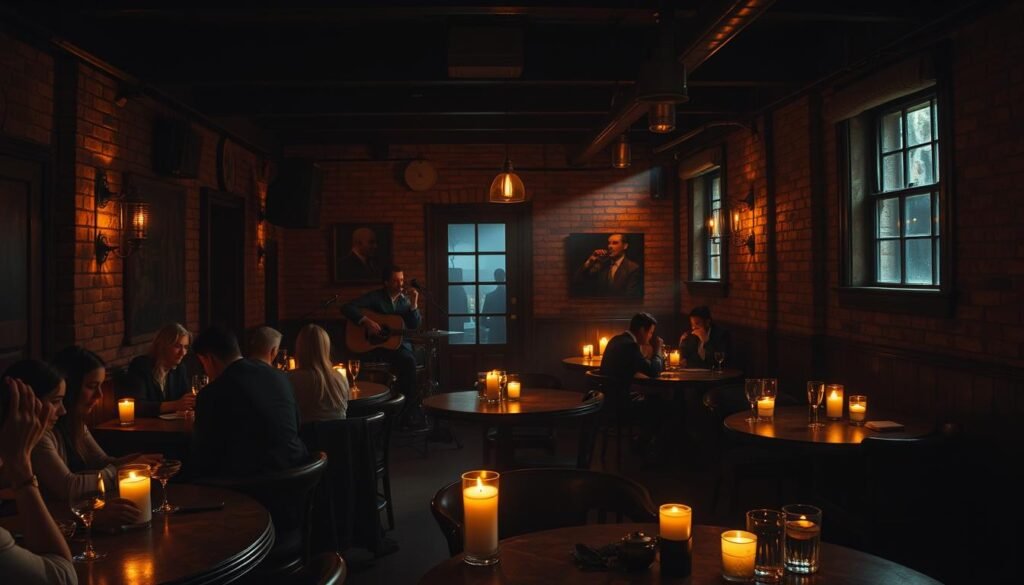
Word of Mouth Culture
In New Orleans, the culture of speakeasies thrives on word of mouth. Locals and regulars often guard the secrets of these establishments, sharing recommendations only with those they trust. This exclusivity adds to the allure, making each discovery feel like a privilege.
Engaging with the local community and frequenting popular nightlife spots can increase your chances of stumbling upon a hidden speakeasy. Don’t be afraid to ask around or follow social media leads to uncover the latest covert speakeasy venues in Louisiana.
By combining these strategies, you’ll be well on your way to experiencing the best of New Orleans’ underground drinking scene. Happy hunting!
Etiquette for Visiting New Orleans Speakeasies
Visiting a speakeasy in New Orleans isn’t just about ordering a drink; it’s about immersing yourself in a unique experience that blends history with modern flair. To make the most of your night out, understanding the etiquette of these exclusive establishments is crucial.
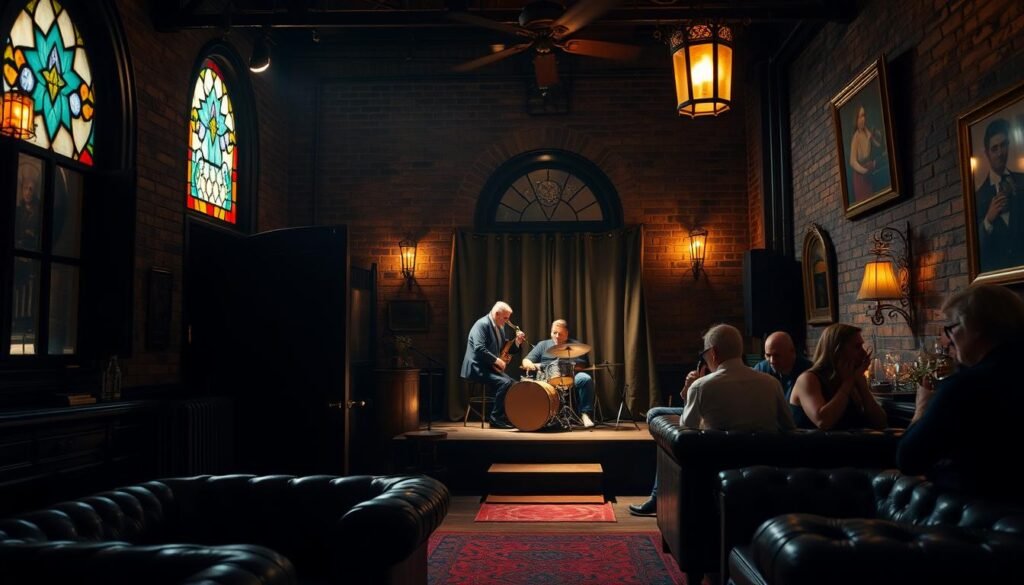
Dress Code and Reservations
When it comes to dressing for a night out at a New Orleans speakeasy, the dress code can vary from stylish casual to formal attire. It’s essential to check ahead of time to ensure you’re appropriately dressed for the venue. Some speakeasies, like those in the French Quarter, may have a more relaxed dress code, while others might require you to dress up.
Reservations are another aspect to consider. While some speakeasies might take walk-ins, many of the more popular ones require or highly recommend reservations, especially on weekends or during peak season. Booking ahead not only ensures your spot but also shows respect for the establishment and its patrons.
Key Tips for Dress Code and Reservations:
- Check the dress code ahead of time to avoid being turned away.
- Make reservations if possible, especially for popular speakeasies.
- Dress according to the venue’s specified dress code.
Ordering Tips and Tricks
Ordering at a speakeasy can be an adventure in itself. The bartenders are often experts in their craft, and the menus can be complex. A good rule of thumb is to start by asking your bartender for recommendations. They can guide you through the menu and help you choose a drink that suits your taste.
For those who are adventurous, trying a signature cocktail or something off the beaten path can be a memorable experience. And don’t be afraid to ask for modifications or special requests; many speakeasies pride themselves on their ability to craft unique drinks.
Ordering Tips:
- Ask your bartender for recommendations to find the perfect drink.
- Be adventurous and try signature cocktails.
- Don’t hesitate to ask for modifications to suit your taste.
By following these guidelines, you’ll not only fit in but also enhance your experience at New Orleans’ exclusive hidden bars and hidden prohibition bars in NOLA. Whether you’re a local or just visiting, these etiquette tips will help you navigate the city’s vibrant speakeasy scene with confidence and poise.
The Role of Mixology in Speakeasy Culture
The art of mixology is at the heart of New Orleans’ speakeasy culture, where every drink tells a story of tradition, innovation, and the city’s vibrant spirit. In these clandestine cocktail lounges, bartenders are not just serving drinks; they’re crafting experiences that pay homage to the city’s rich history and cultural heritage.
Signature Drinks to Try
New Orleans is famous for its unique cocktails, many of which have become synonymous with the city’s identity. When visiting a speakeasy, you should try the Sazerac, a classic New Orleans cocktail made with absinthe, rye whiskey, and Peychaud’s Bitters. Another must-try is the Ramos Gin Fizz, a frothy concoction that requires skill and patience to perfect.
Here’s a look at some signature drinks you might find in New Orleans’ speakeasies:
| Cocktail Name | Main Ingredients | Inspiration |
|---|---|---|
| Sazerac | Rye Whiskey, Absinthe, Peychaud’s Bitters | Classic New Orleans |
| Ramos Gin Fizz | Gin, Lemon Juice, Simple Syrup, Egg White | New Orleans Tradition |
| Vieux Carré | Rye Whiskey, Cynar, Sweet Vermouth | Prohibition-Era |
Meet Master Mixologists
Behind every great cocktail is a master mixologist who has spent years honing their craft. In New Orleans, these bartenders are revered for their creativity, technical skill, and deep understanding of the city’s cocktail history. They experiment with local ingredients, historical references, and innovative techniques to create unique drinking experiences.
For instance, the mixologists at the Back Room at Coterie are known for their inventive cocktails that blend traditional flavors with modern twists. Similarly, the bartenders at The Carousel Bar are celebrated for their classic cocktails served in an enchanting setting that rotates like a carousel.
The Influence of Jazz on Speakeasy Experiences
As you step into New Orleans’ hidden speakeasies, the sounds of jazz envelop you, setting the tone for an unforgettable night. The city’s jazz heritage is not just a backdrop for the speakeasy culture; it’s an integral part of the experience.
Jazz and speakeasies have a long history together, dating back to the Prohibition era when jazz musicians would often play in secret bars. This legacy continues in New Orleans, where live jazz performances are a staple in many underground drinking spots.
Live Jazz Performances
Many of New Orleans’ best speakeasies feature live jazz performances that range from soulful solo acts to energetic ensembles. These performances are not just entertainment; they’re an immersive experience that transports you to another era.
- Intimate Settings: Speakeasies often have intimate settings that bring the audience close to the performers, creating a unique connection between the music and the listener.
- Spontaneous Performances: Some speakeasies are known for spontaneous jazz performances, where musicians might drop in and play a few tunes, adding to the unpredictable charm of the night.
The Connection Between Jazz and Cocktails
The relationship between jazz and cocktails in New Orleans speakeasies is symbiotic. Just as jazz improvisation creates something new and unexpected, mixologists in these bars craft innovative cocktails that are both a tribute to the city’s traditions and a push towards new frontiers.
Some key aspects of this connection include:
- The use of local ingredients in cocktails, mirroring how jazz incorporates local musical traditions.
- The art of mixology, much like jazz, is about creating a unique experience each time, whether through a new cocktail recipe or an improvisational twist on a classic.
In New Orleans, experiencing a speakeasy without the influence of jazz would be like visiting without trying beignets at Cafe du Monde – it’s just not the full experience. The city’s hidden speakeasies, with their live jazz and handcrafted cocktails, offer a taste of the authentic New Orleans culture that is both rich in history and vibrantly alive.
Seasonal and Themed Speakeasy Events
As a local, I’ve seen how New Orleans’ covert speakeasy venues Louisiana evolve with the seasons, incorporating holiday specials and themed nights that make each visit distinct. The city’s speakeasies are not just about great cocktails; they’re about creating experiences that resonate with the vibrant culture of New Orleans.
Holiday Specials You Can’t Miss
New Orleans is known for its festive spirit, and its speakeasies do not disappoint during holiday seasons. For instance, during Mardi Gras, many secret bars in New Orleans offer special menus and decorations that capture the essence of the city’s most famous celebration. It’s a time when the usual secrecy around these bars is balanced with an air of festivity that’s hard to resist.
Similarly, Halloween is another time when these bars get creative, often hosting costume parties and serving themed cocktails that are as spooky as they are delicious. It’s a great way to experience the fun side of New Orleans’ nightlife.
Themed Nights and Seasonal Cocktails
Beyond the major holidays, many of New Orleans’ speakeasies host themed nights that are worth checking out. These can range from jazz nights to literary-themed evenings, all accompanied by seasonal cocktails that are crafted to match the theme. For example, a summer-themed night might feature refreshing cocktails with local ingredients like mint and citrus.
| Season | Themed Nights | Signature Cocktails |
|---|---|---|
| Spring | Jazz Appreciation Nights | Fresh Floral Infusions |
| Summer | Outdoor Movie Nights | Citrus and Mint Coolers |
| Autumn | Literary Salons | Spiced Apple Ciders |
| Winter | Holiday Masquerade Balls | Warm Spiced Cocktails |
These events not only make the speakeasies more appealing but also contribute to the rich cultural tapestry of New Orleans. Whether you’re a local or just visiting, participating in these seasonal and themed events is a great way to experience the city like a true insider.
How to Find New Orleans’ Best-Kept Secrets
As a local, I’m always excited to share the city’s hidden gems with visitors. New Orleans is a city that’s always evolving, and its hidden prohibition bars and clandestine cocktail lounges are no exception. To stay in the loop about the latest and greatest, you need to know where to look.
Discovering Hidden Bars through Apps and Resources
One way to uncover New Orleans’ best-kept secrets is by using apps and online resources. Websites and social media platforms dedicated to the city’s nightlife can be a great starting point. You can also use apps that specialize in discovering hidden bars and speakeasies, which often provide insider tips on the city’s most exclusive clandestine cocktail lounges.
Engaging with the Local Community
Engaging with the local community is another great way to uncover new hidden prohibition bars nola. By attending local events, joining groups focused on New Orleans’ nightlife, and striking up conversations with bartenders and locals, you can gain access to insider knowledge on the city’s most secretive bars. This way, you’ll be among the first to know about new speakeasies and hidden gems in the city.
FAQ
What are some of the best hidden speakeasies in New Orleans?
Some of the top hidden speakeasies include The Back Room at Coterie, The Carousel Bar, The 21st Amendment, and Launched by the French 75 – each offering a unique experience.
How do I find a speakeasy in New Orleans?
Finding a speakeasy often requires insider knowledge or a keen eye for subtle clues like unmarked doors or whispered recommendations.
What’s the dress code for visiting a speakeasy in New Orleans?
Dress codes vary, but generally, you’ll want to dress stylishly and sophisticatedly to fit in with the ambiance.
Do I need a reservation to visit a New Orleans speakeasy?
Some speakeasies recommend or require reservations, especially on weekends or for special events, so it’s a good idea to check ahead of time.
What makes New Orleans the perfect city for speakeasies?
New Orleans’ unique blend of history, jazz, and culture, along with its historic architecture, creates the perfect backdrop for these exclusive bars.
Can I find underground drinking spots in the French Quarter?
Yes, the French Quarter is home to many hidden speakeasies, taking advantage of its narrow streets and historic buildings.
Are there any Prohibition-era cocktail lounges still around?
While the original Prohibition-era bars are largely gone, many modern speakeasies pay homage to that era with their decor and cocktails.
How important is mixology in the speakeasy culture?
Mixology is at the heart of the speakeasy experience, with many bars featuring expertly crafted, unique cocktails.
Can I expect live jazz performances at New Orleans speakeasies?
Many speakeasies feature live jazz, adding to the sophisticated and lively atmosphere.
Are there seasonal or themed events at New Orleans speakeasies?
Yes, speakeasies often host seasonal and themed events, including holiday specials and themed nights with seasonal cocktails.
How can I stay informed about new or secret bars in New Orleans?
Engaging with the local community, using apps, and following local resources can help you discover new and secret bars.
